The dry spring has been good for the bearded iris, their growth starting early and rapidly converting the energy stored in their knuckly rhizomes. We have them growing against the warm walls here and in splendid isolation so that they can bask in the sunshine and out of our wind to spare them from tatters. Light caught in their flattened foliage, designed like sails to harvest every ray, you need to be there to watch from the moment they stir. The leaves are full of promise well before you spot the first flowering stems, sheathed still and backlit then suddenly visible, spearing free into the air. Racing to bud they are the epitome of expectation. Papery sheaths encase a tease of tightly wrapped colour, the growth slows as they ready. Then, one morning, the first miraculous flower and then daily more over the three weeks or so until their peak.
When we moved here I set up a trial of bearded iris on our south-facing slopes in order to get to know the plants that I thought would do well here and that I would like to get to know better. You need to have room to grow bearded iris or to commit to letting them bake once their flowering season is over. Until moving here I had gardened with them tentatively, giving over a small area of precious sunshine here or there, but always pining for the room to grow them freely and en masse, with one against the other.
In the spirit of research, I spent a glorious day in the iris fields of Woottens of Wenhaston with the late owner and iris collector Michael Loftus. I was looking for good form, nothing that felt too overbred and debilitated by ruffles, and I was hunting down good colour. Some deep and saturated, others less definable or with the complexity of veining and picotee. I kept an open mind within this remit with the aim of honing a palette and came away with an extensive list of 56 that spoke to me whilst I was there.
We observed the trial closely over the next five years, each season revisiting those that came to the surface as interesting and repeating the editing exercise to select the keepers. In the sixth year I made the final selection and so, after flowering and as the plants were going into their summer dormancy, I invited gardening friends to come and collect the divisions and liberated spares. It was a Saturday morning free-for-all, every bit as good as a jumble sale and uplifting for having whittled out the favourites and having sent the rejects to appreciative homes.
Twenty or so Benton iris, bred by the great plantsman Cedric Morris, which had very quickly come to the surface as right for the mood here, were planted against the hot, south-facing wall that backs the herb garden. His selections had a natural cohesion and I wanted to keep them together to see what he had seen, unadulterated. There were another dozen or so that we found impossible to part with. The hot flanks of the granite troughs became home to a handful of blues, a black and a thunderous purple, whilst the misfits went up to the barn wall where we grow those plants that don’t feel right in the garden, but make for good cutting; peonies, roses, sweet peas, dahlias and sunflowers.
The jarful you see here is a selection of the blues. Blue is not a colour that feels right in the main garden. Perhaps because the light is so bright all day on the open slopes. Blue is best in the gloaming or in shadow when it glows and hovers. It is lost, fugitive and hard to claim in bright light. Visited early in the morning or picked and brought inside where the dim brings out their luminosity, they come into their own.
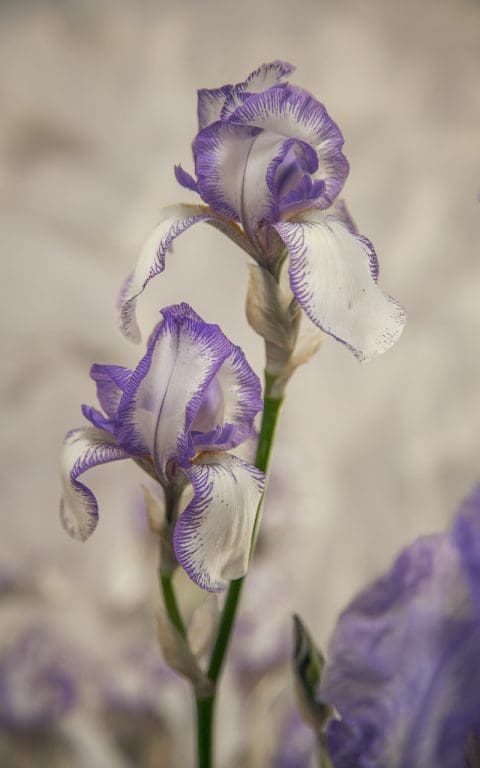
‘Mme. Chereau’ is the first to bloom here and though the flower is small and delicate, it stands easily as tall as the majority at about 90cm. Bred in 1844, it was one of the most sought after iris of the 19th century. Described as ‘Hortense violet over creamy, ruffled falls’ in early iris manuals, it registers as pale from a distance. Though prized for the undulations in its standards and falls, the ruffling never overwhelms the flower which is small and perfectly proportioned. I love this iris and keep it close to the herb beds, where the green cushions of lavender are mingled this early in the season with denim blue flax. ‘Mme. Chereau’ is also delicately scented.
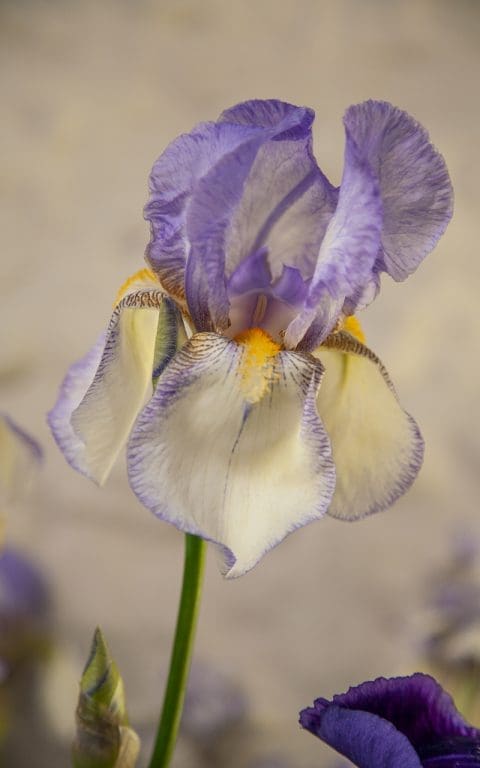
‘Nassak’ is planted close to ‘Mme. Chereau’ for its similar mood and colouring, and for the joy of the scale change. Bred in 1938 marbled sky-blue standards hover above white falls with exquisite blue stitching. The flowers are large and need the shelter the trough affords them from the Westerlies. Of all this bunch this is the most heavily scented. Zesty and opulent in equal measure and perfuming the whole of the boot room.
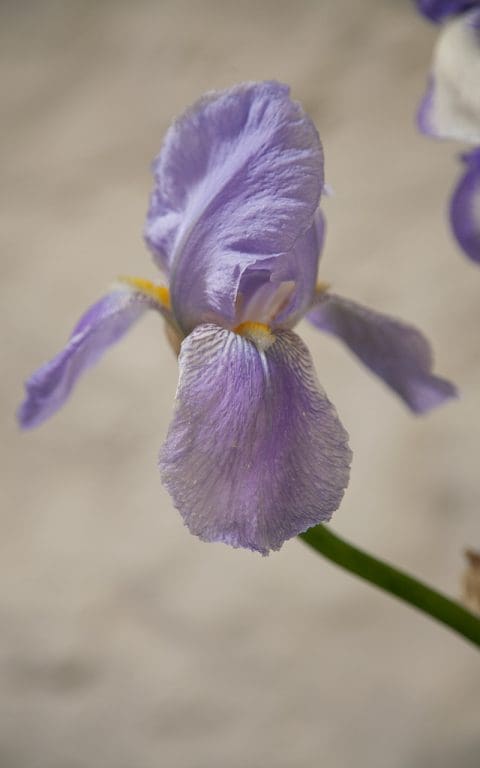
We kept ‘Tishomingo’ as it stood out for its simplicity. Bred in 1942 and described as a ‘Wisteria blue self’, it is blue throughout with the exception of a pale veined throat and golden beard. I liked it because I could see it in a silver and grey planting and quite simply didn’t want to overlook it for being so simply itself. An elegant plant with ease, poise and stamina when the wind blows. Pick it and you immediately notice its citrus perfume.
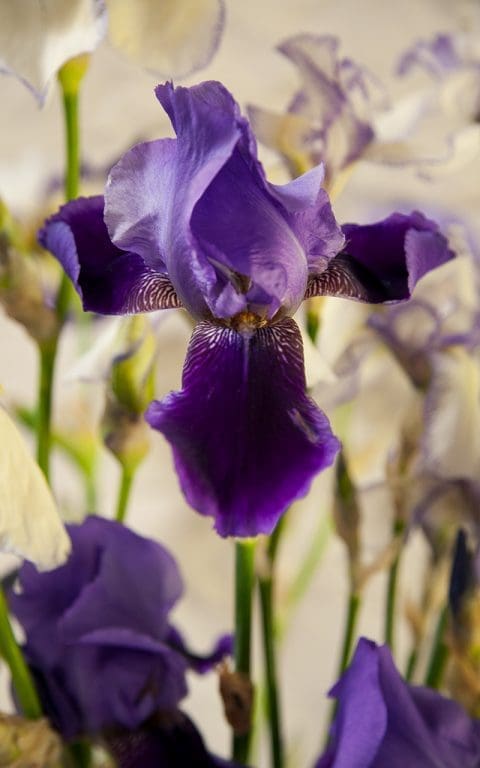
‘Benton Nigel’ was bred by Morris in 1956 or thereabouts and, of the Bentons we have here, makes an exception amongst its siblings for its saturated colour. Dark violet standards are underpinned by the richness of the inky purple falls, which glow more deeply for their paler, light catching margins, as if the petals were lit from beneath. This is an impeccable iris, well-behaved and clean in appearance.
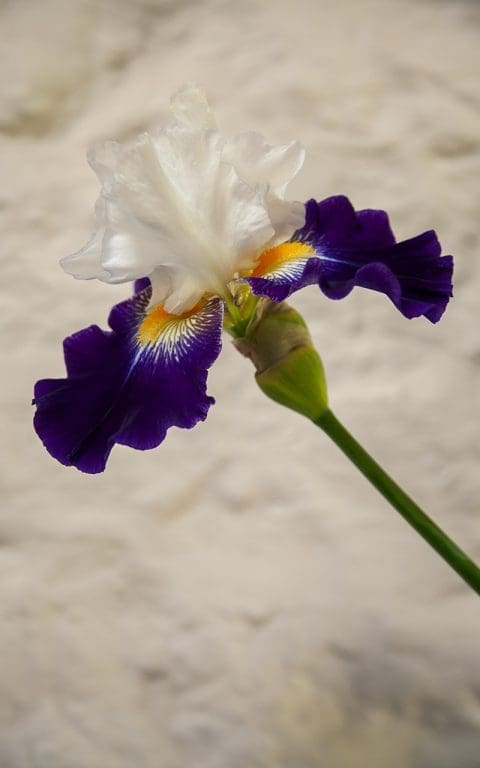
‘Noctambule’ is the misfit amongst the misfits. A Cayeux iris bred in 2007 (the name means Night Owl in French), it feels decidedly different from the rest, with white satin standards and inky ruffled falls thrown out almost horizontally. At just over a metre in height it also has a stature that puts the others in the shade. Far too glamorous and exotic for this country hillside, I have been in two minds about keeping it since it first flowered here over 8 years ago. Somehow, however, it has always had a stay of execution. Various friends who have seen it have said, “You can’t let that one go, it’s incredible!”. My mother, who is staying with us during lockdown, was drawn to it too and we cut a stem for her bedroom. And so now its fate is sealed as a keeper and, as you can see, the contrast in the bunch is enlivening. The nearest to a black and white iris bred so far, squint in sunshine or see it at dusk and you get the impression, but the falls are really the richest, most velvety purple ands there’s no denying, it’s quite the distraction.
Words: Dan Pearson | Photographs: Huw Morgan
Published 16 May 2020
Huw Morgan | 31 October 2019
It is almost three months since Flora first came to Hillside to work with material taken from the garden here. That summer visit was an introductory and learning experience for us both. Flora’s first time in the garden here, time needed to get to know the garden, time to find a setting to shoot in, the challenges of working outside and to be photographed in process when she is usually unseen, off stage. For me there was the self-imposed pressure to do Flora’s art justice in my photographs and to capture those moments of consideration, reflection, decisiveness, choice, care, which I was witness to as she worked.
As she worked this time I started to notice the ways in which Flora relates physically to the space in which the flower arrangement was being made. Standing with her back to me I could tell that she was judging, evaluating, balancing, deciding, framing, all of which could be read from the set of her jaw or the angle of a shoulder. The delicacy with which she would select a stem, find a location for it, and then gently and firmly aid and guide it into position. The final stroking of the plant to allow it to fall naturally and also the sensual pleasure of engaging with plants this intimately.
It reminded me of something Midori, the head gardener at Tokachi Millennium Forest said to us when she was staying here early last autumn, which is that the last flower arrangements of the year should be relished as they are the last opportunity for ‘touching green’ before the winter comes.
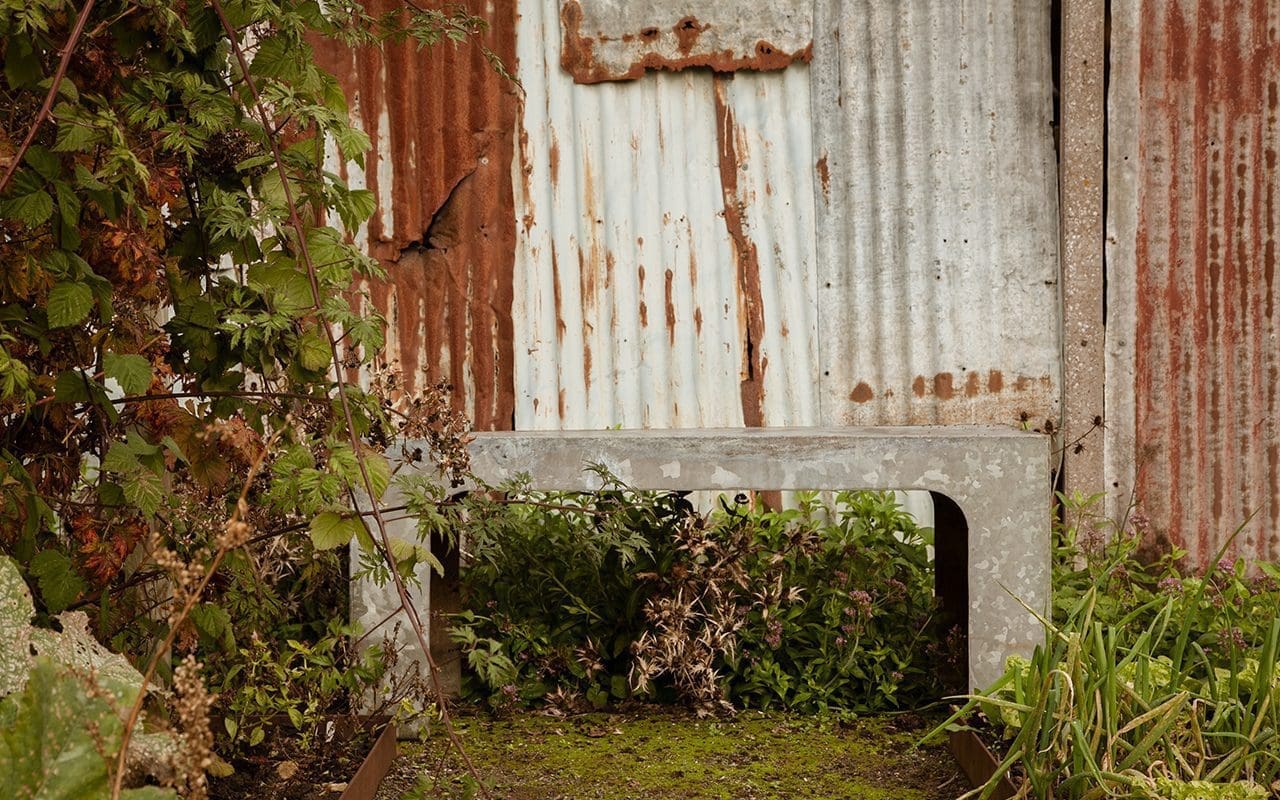

Flora Starkey | 1 November 2019
The last time I came to Hillside, Summer was making way for Autumn. This visit Autumn is peaking and the gardens are more subdued, but no less splendid.
We decided to shoot in the same location as before, in front of the beautifully rusted corrugated iron barn. I’m interested to see how the four images will sit together by the end of the year and like the idea of them being in the same place.
As before, we cut sparingly – no more than a few stems from each plant. This time I chose a lot of dried structure – dill, red orache, fluffy willow herb and a stem of Thalictrum ‘White Splendide’ with its delicate mottled yellow leaves. And of course, some essential autumnal colour in the form of Euphorbia cornigera and a snipping from the fiery Prunus x yedoensis.
Moving back to the barn, we pick some blue glass jars from the house & get to work. The space will always dictate the arrangement in terms of scale and the zinc table outside calls for size, not least because of the October wind.
The tall dried pieces were placed first creating the framework, a beautiful Aster umbellatus towering over the others. A few leaves of royal fern quickly followed, adding a myriad of colours in each stem. I carried on building the colour with warm tones before offsetting with the deep blues and violets of a few varieties of salvia.
Even though the stems keep get buffeted by the wind and moving around, I like this way of working. It’s spontaneous & can’t be too precious. After a while, I feel like we’re missing some pops of brighter colour and go foraging for rosehips, finding some spindleberry on the way.
As these are more structural branches, I end up taking the arrangement apart & starting again, adding these elements earlier. Some of the salvia had also started to wilt by the time we got back so we cut a little more. If I were to use this again, I’d try & sear it to make it last longer. I finish with a curling tail of yellow amsonia, a shock of pale yellow scabious and some shiny black berries of wild privet.
As well as wanting to represent the garden in all her autumnal glory, I was also keen to make a smaller and simpler arrangement – something quieter that allows the stems their space to shine. It’s probably how I’m happiest working.
The picture window outside the milking barn provides the setting and frames the vases with the changing landscape behind. I start with a length of old man’s beard and some more euphorbia. A few stems of panicum & chasmanthium add height along with a speckled toad lily. A sprinkling of dainty white asters were added lower down and some oxblood red leaves of fagopyrum trail off to the side, slightly broken but more beautiful for it.
Back in the garden & you can see the silhouettes of winter beginning to appear. Huw & I spent a little time looking at the plants that we’d like to dry and preserve for our next shoot. I’m looking forward to the change of the season already
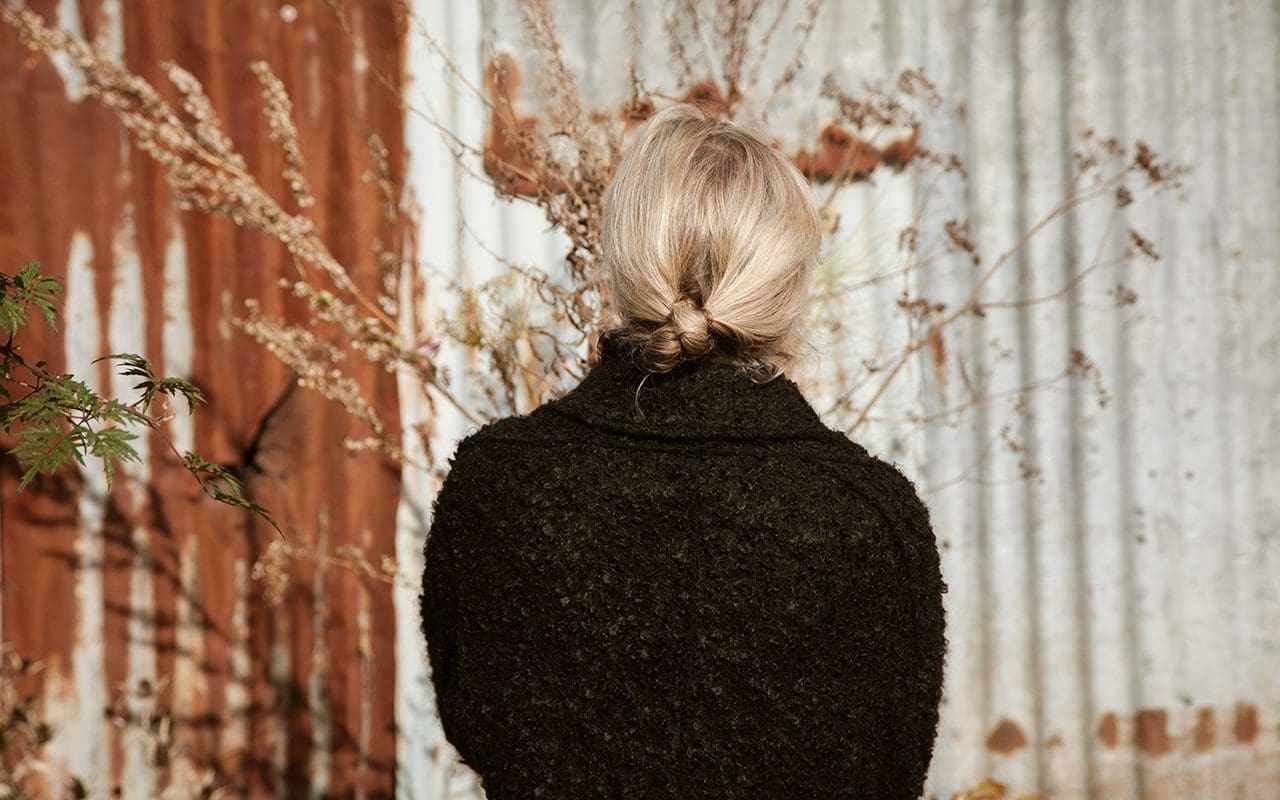
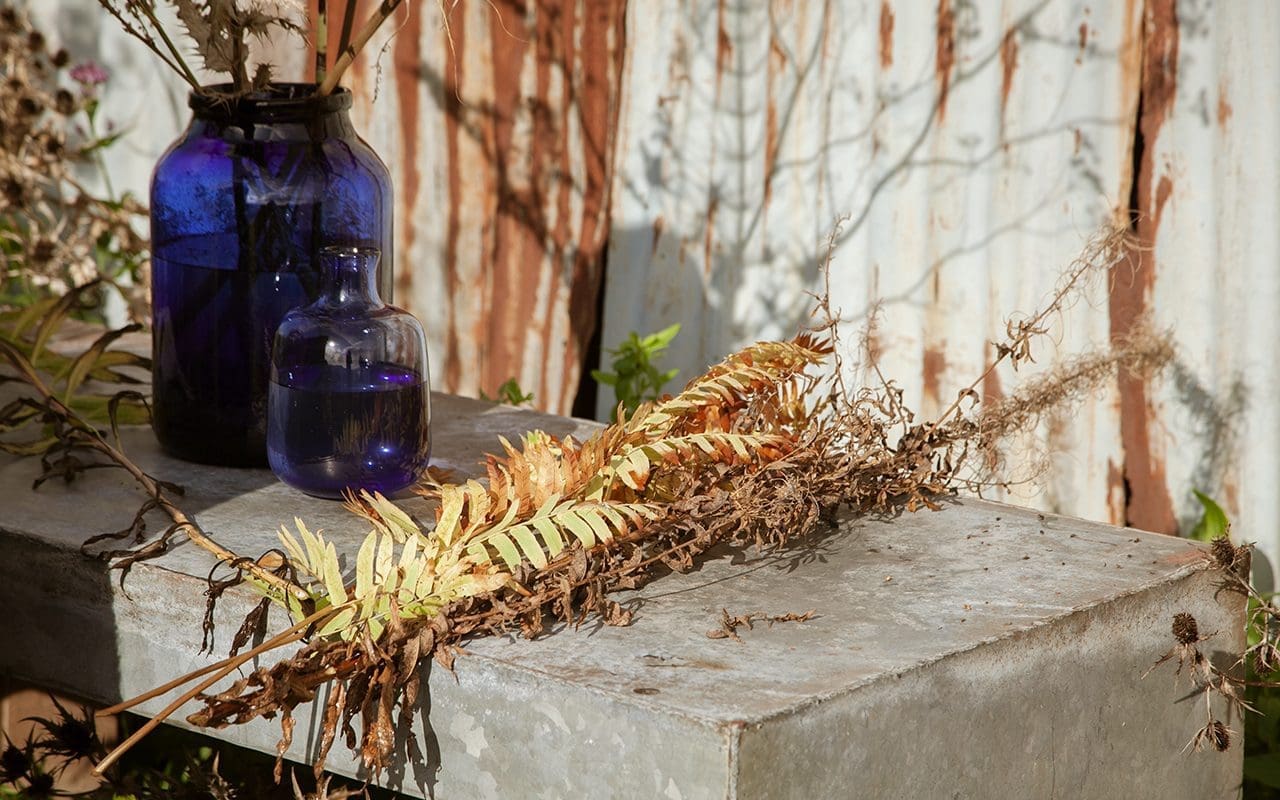

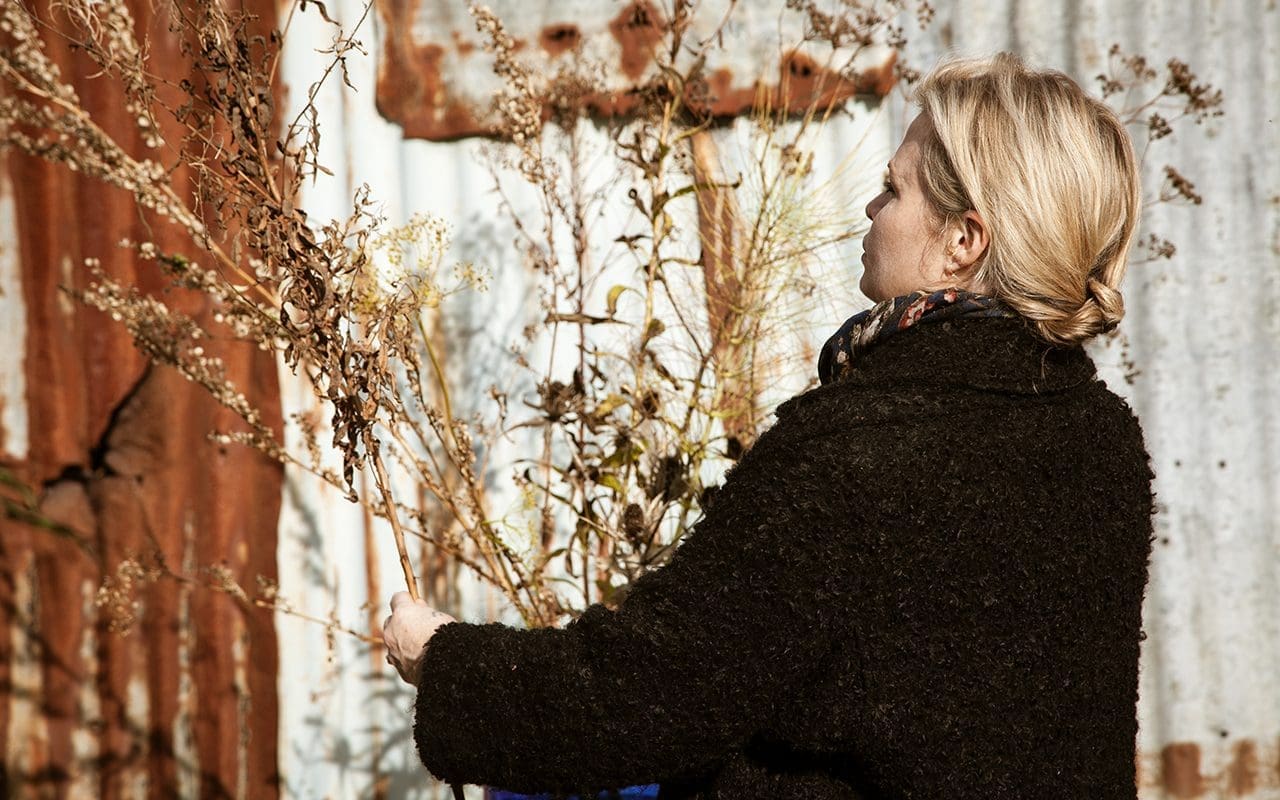
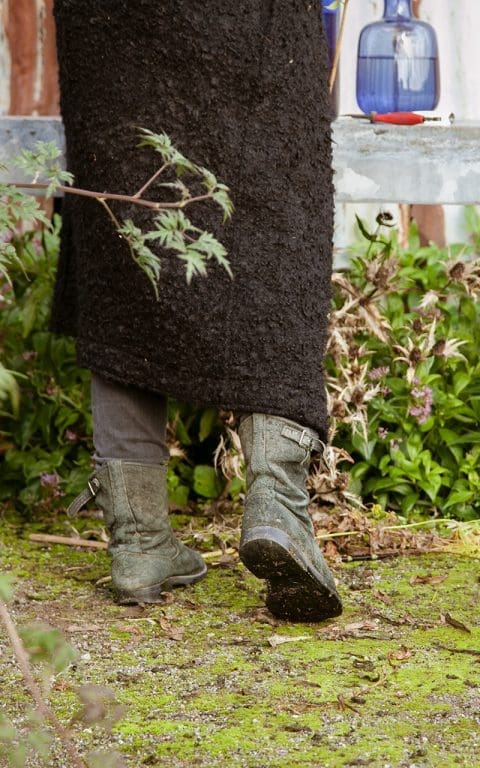
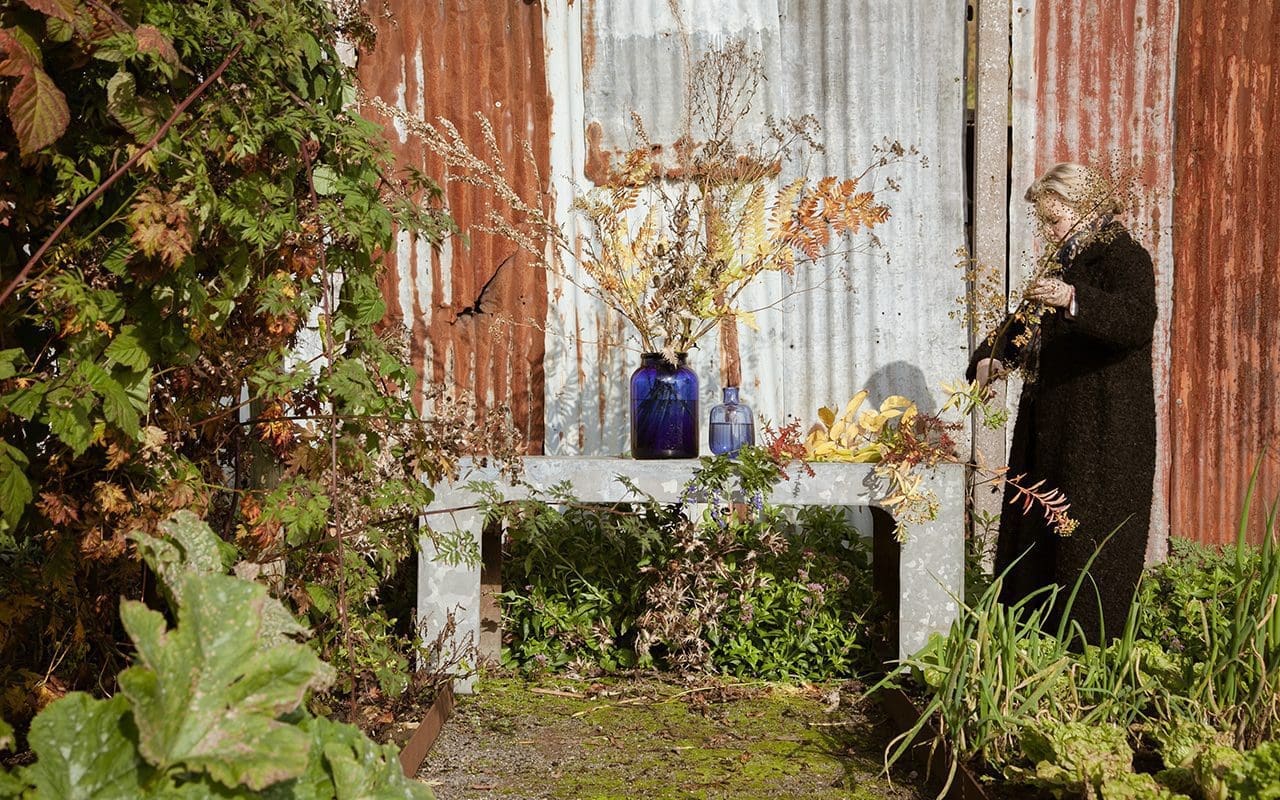
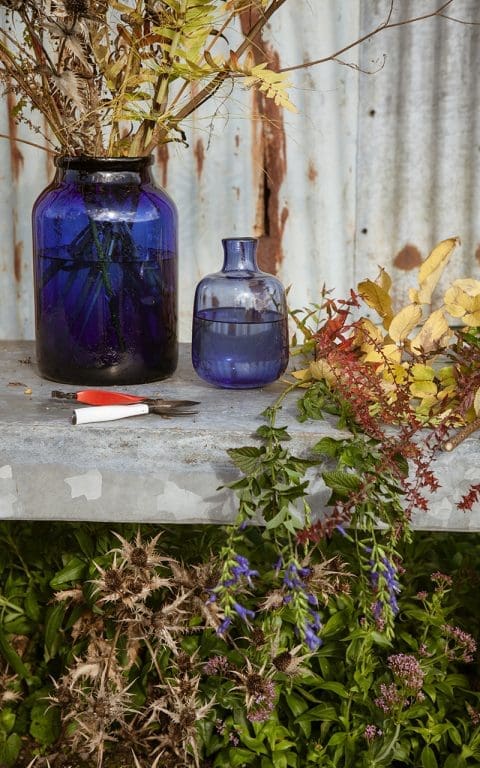
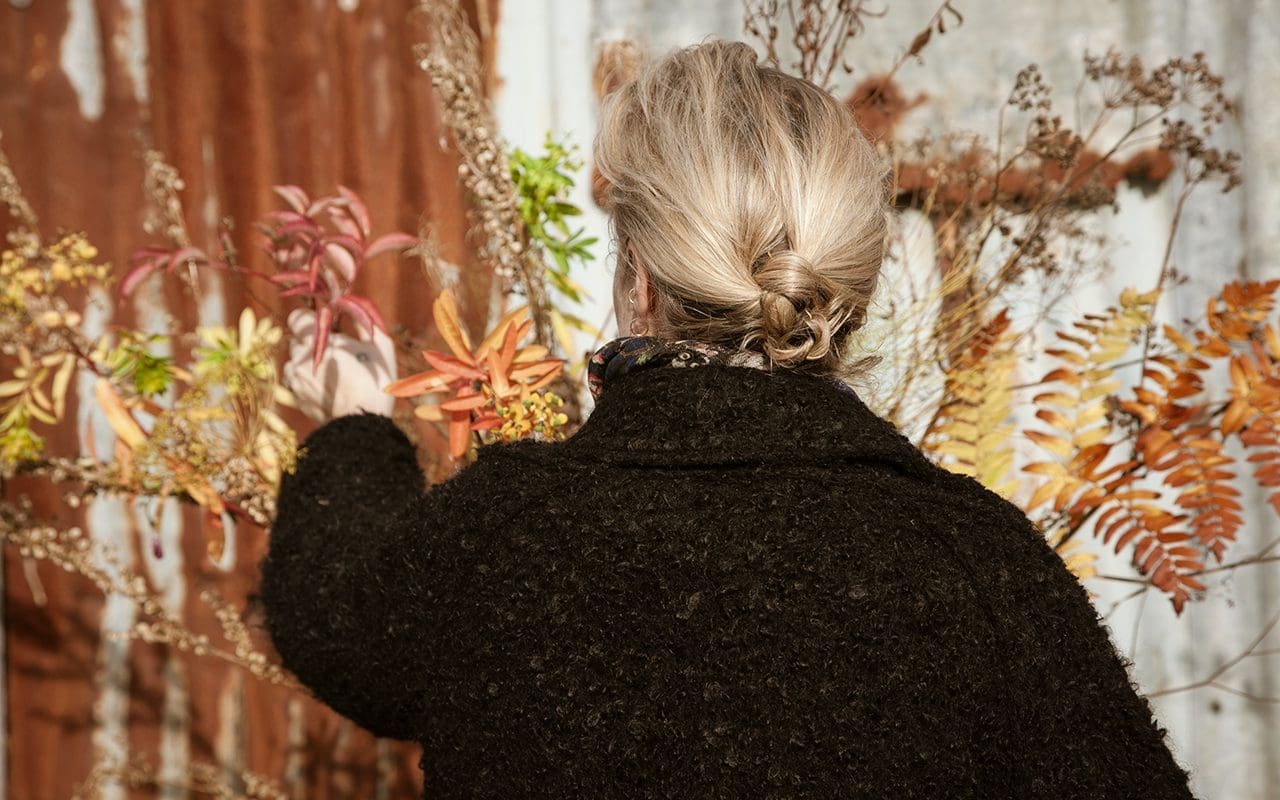
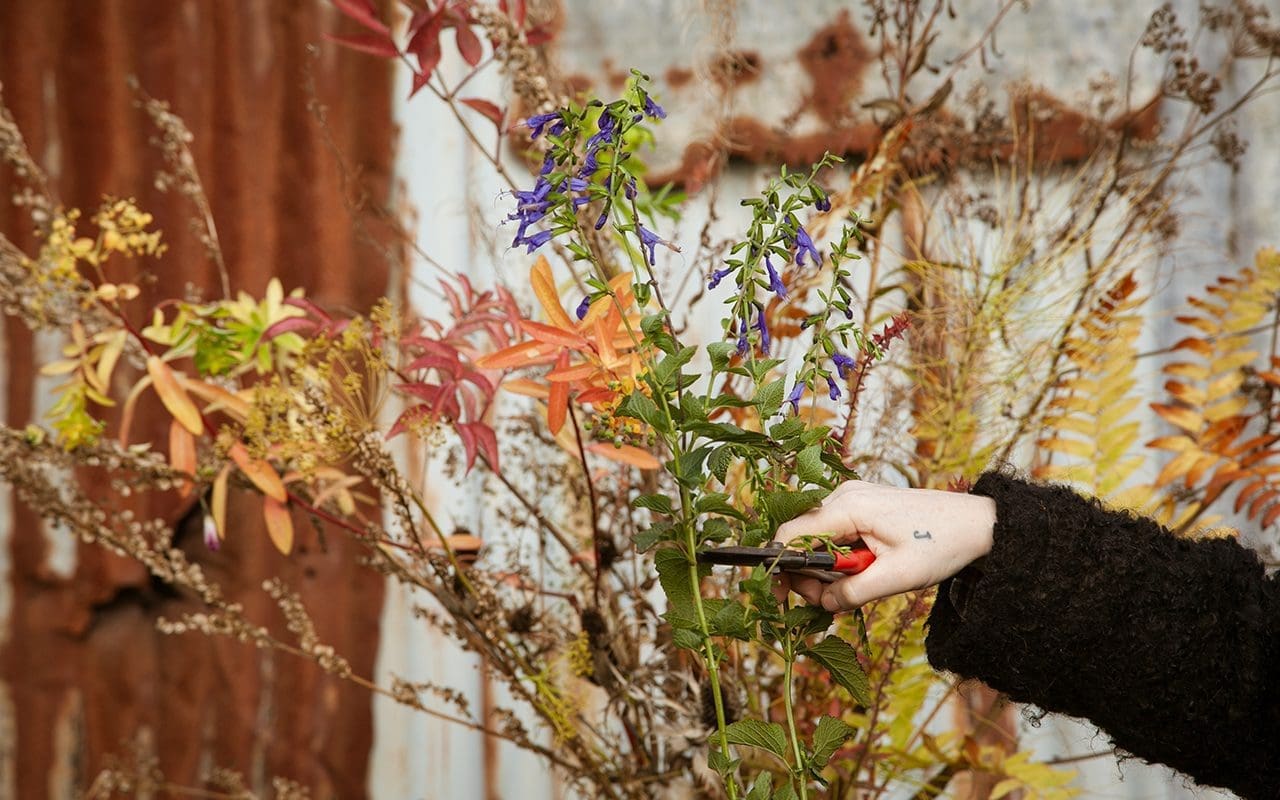
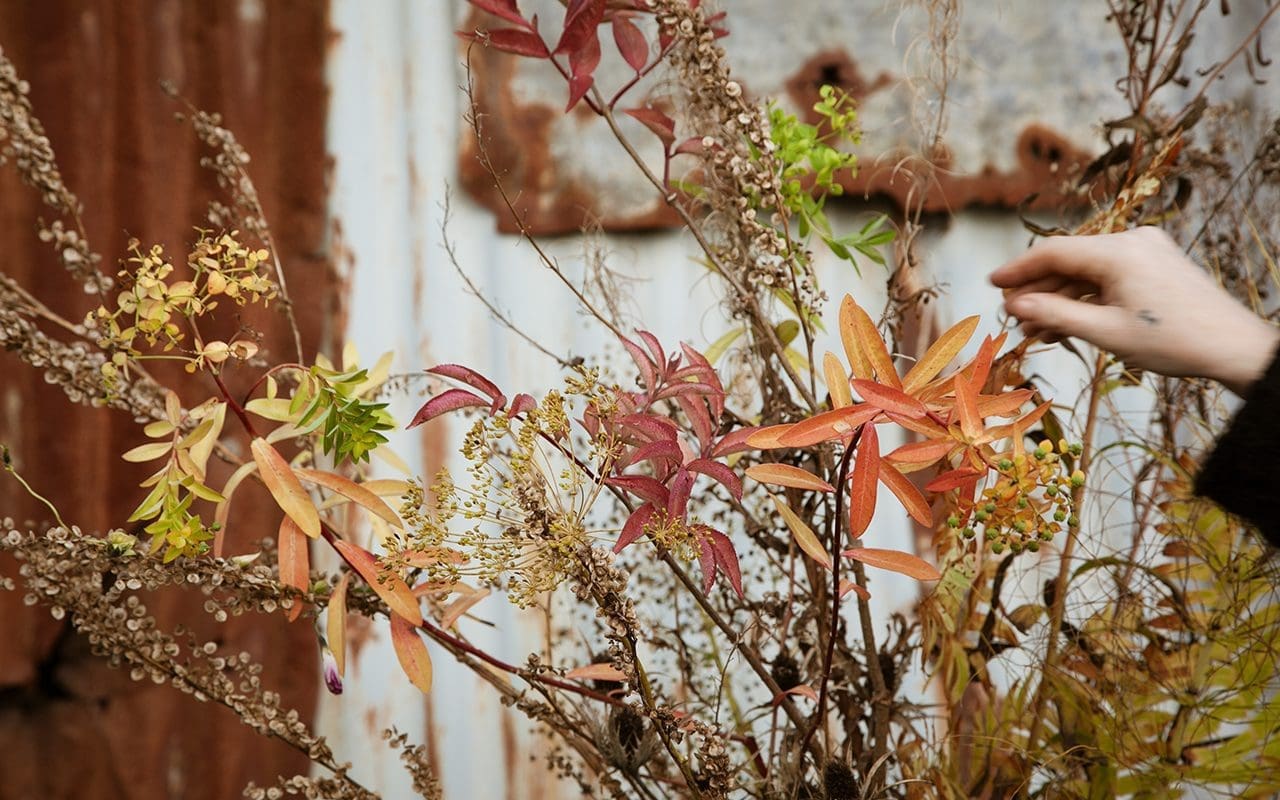

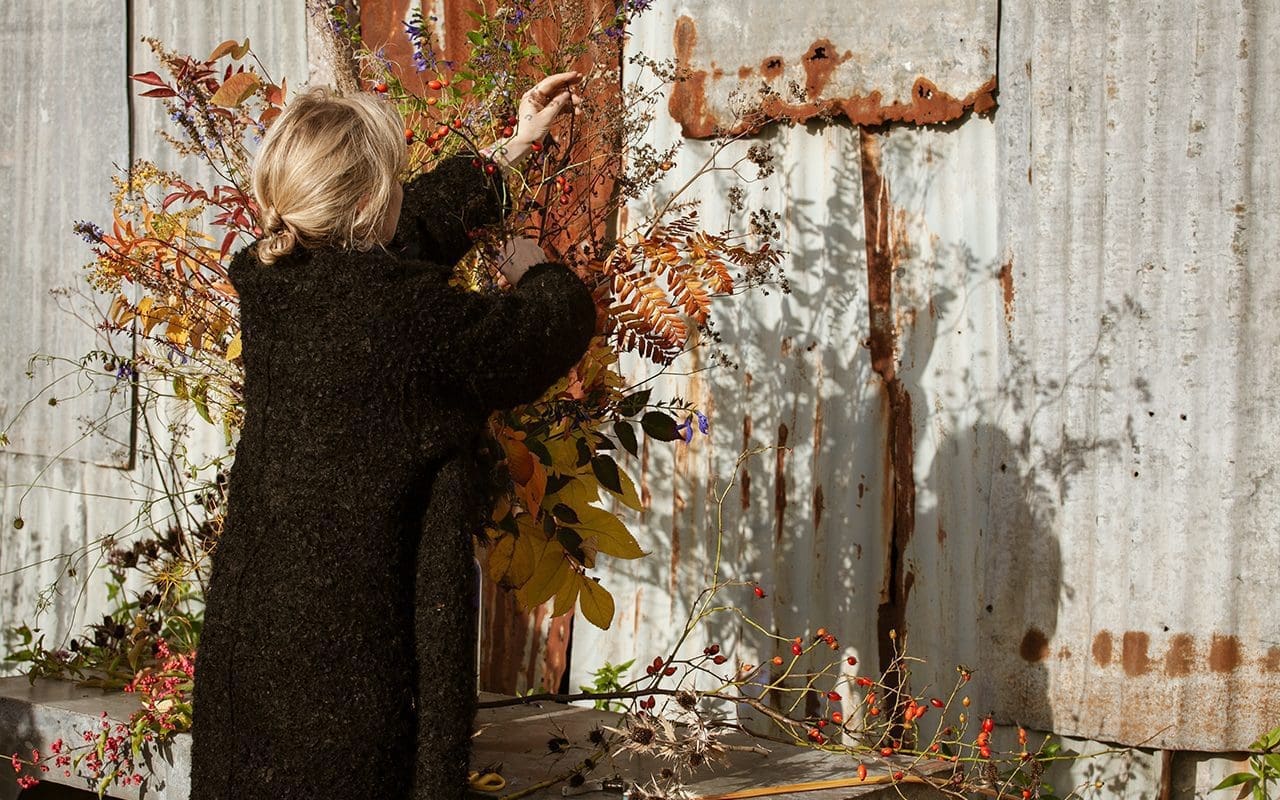
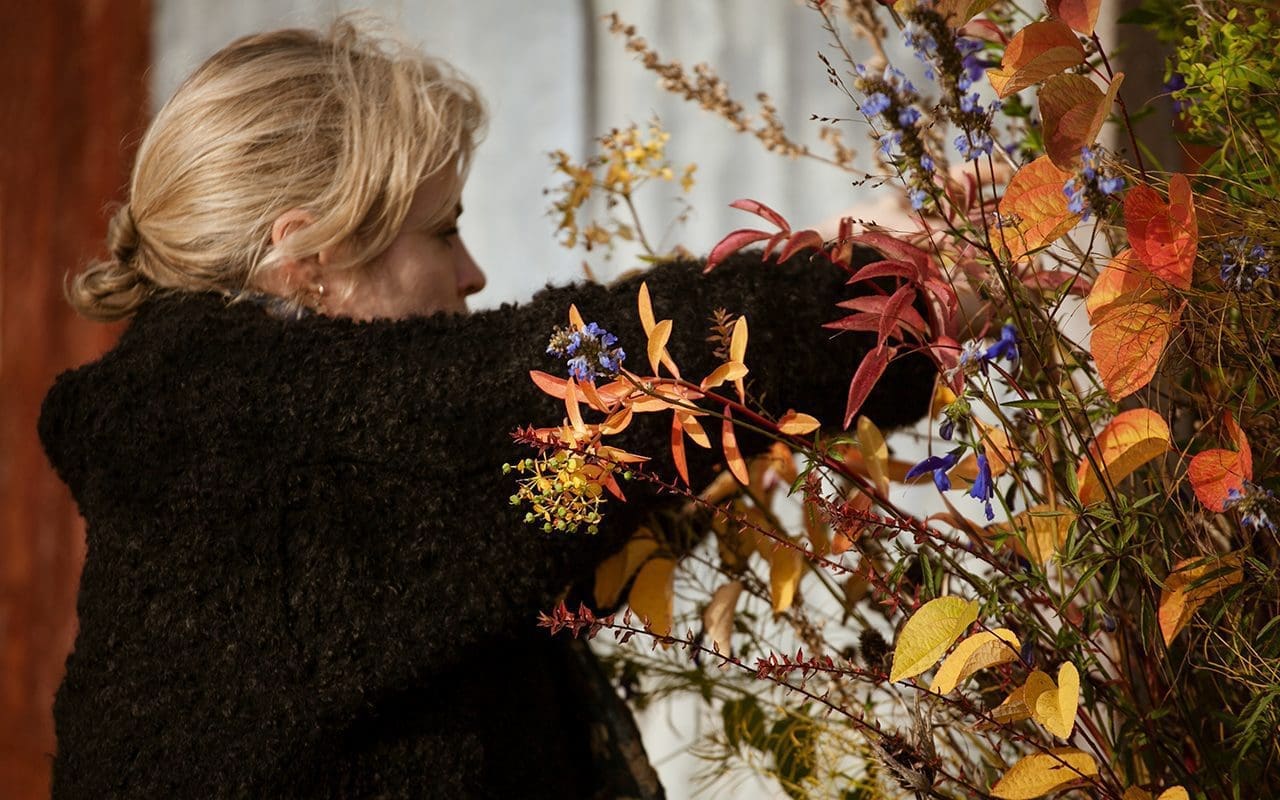
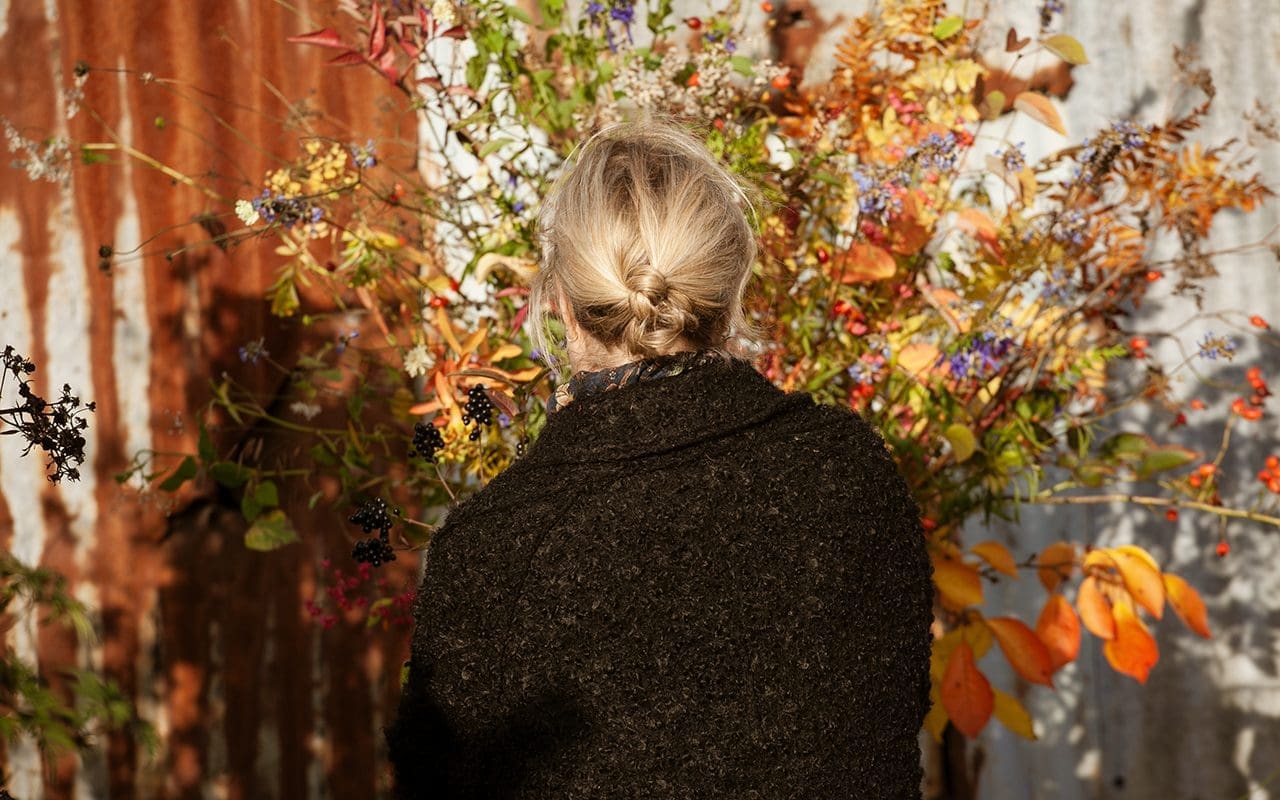
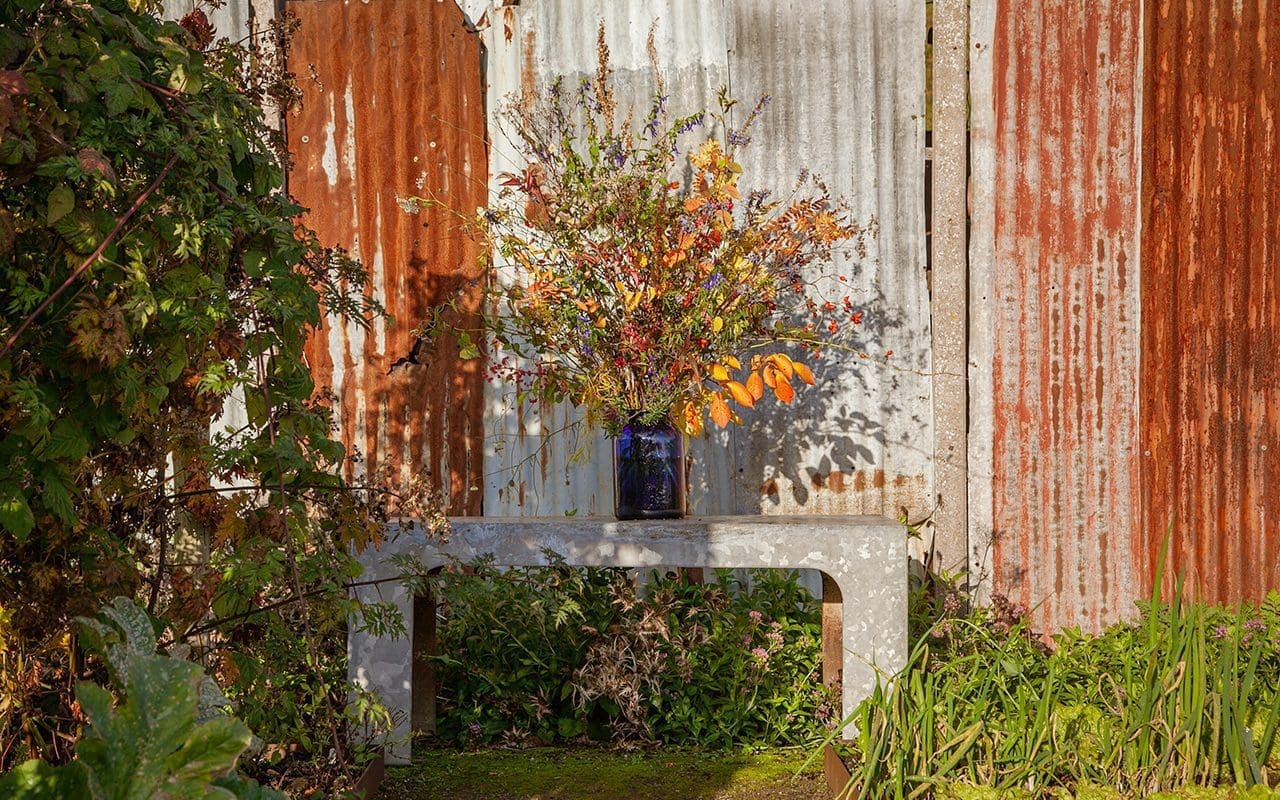
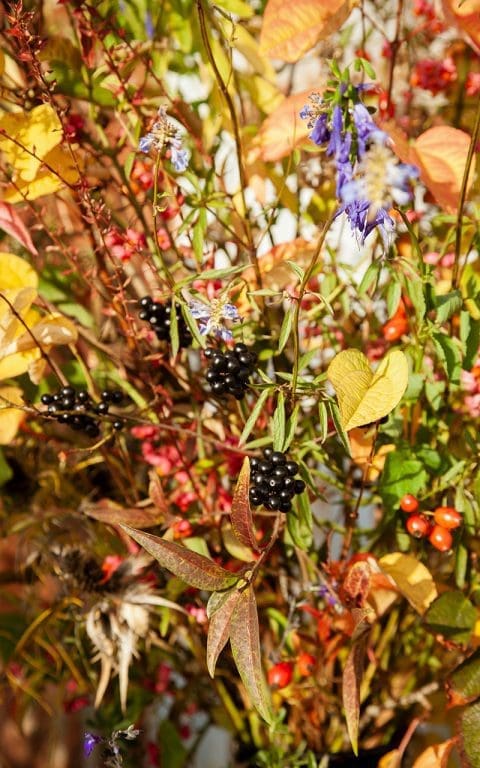
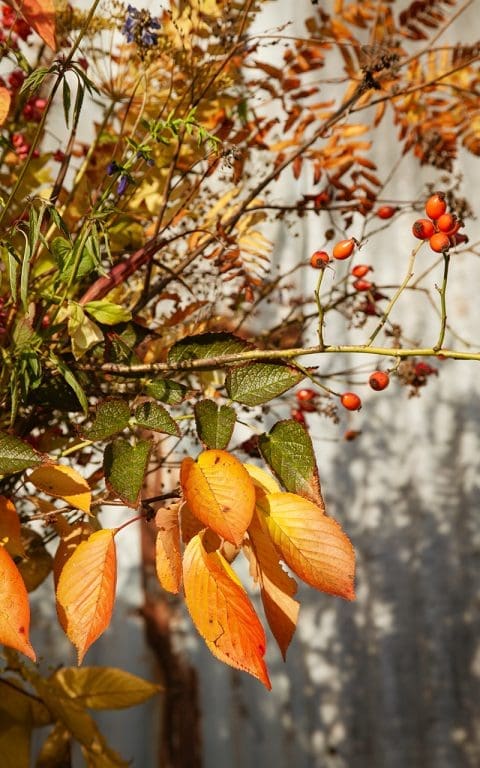

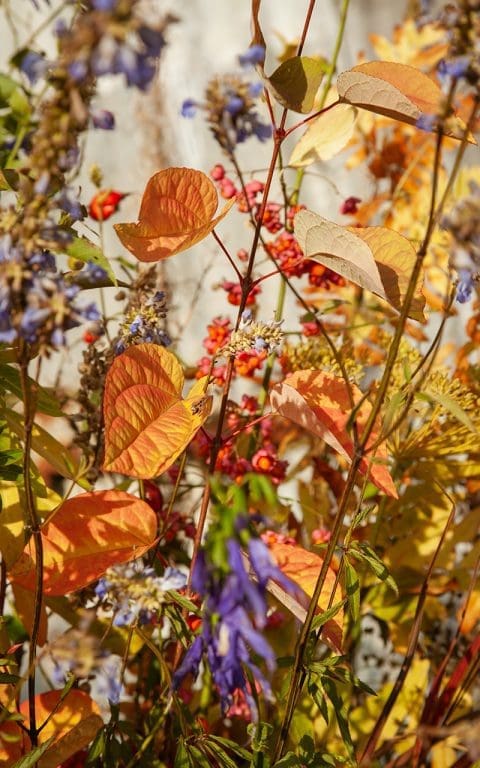
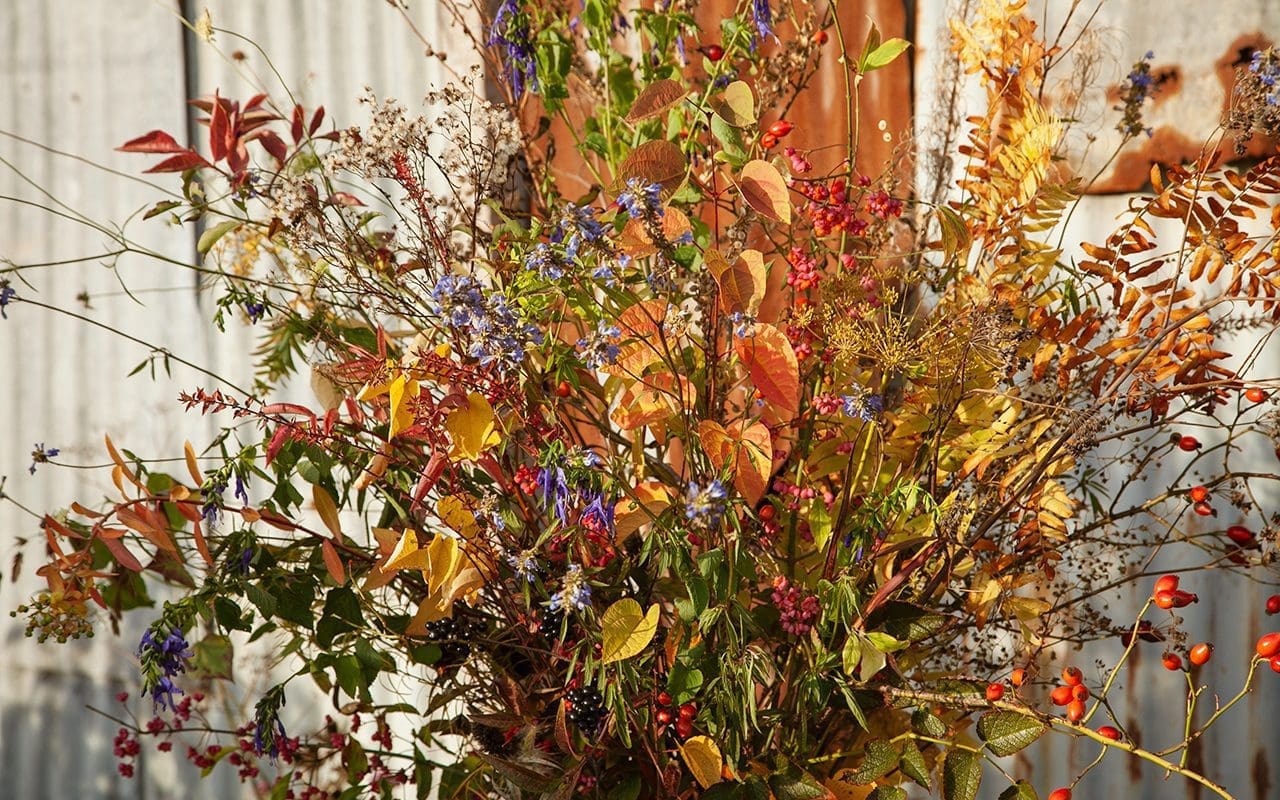
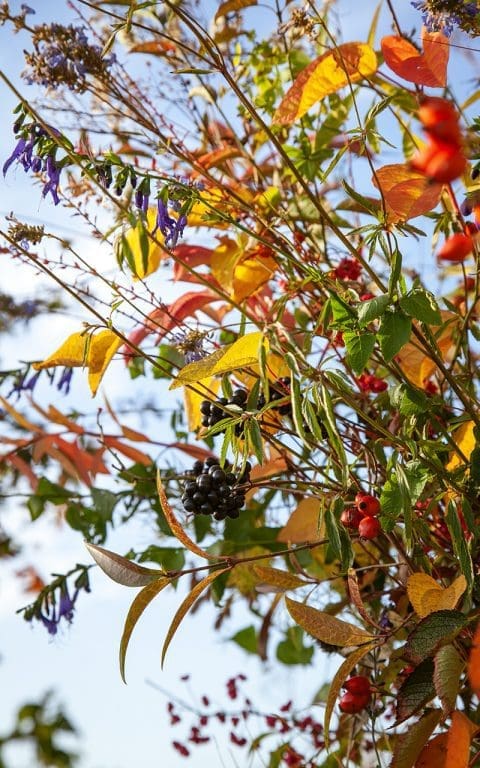

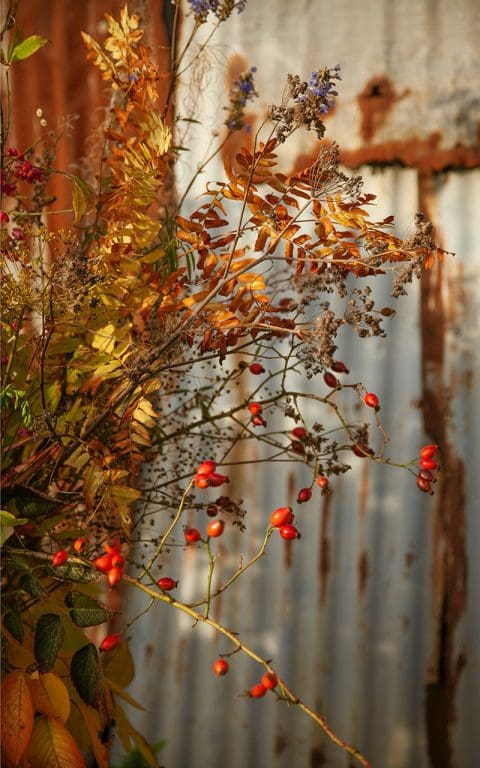
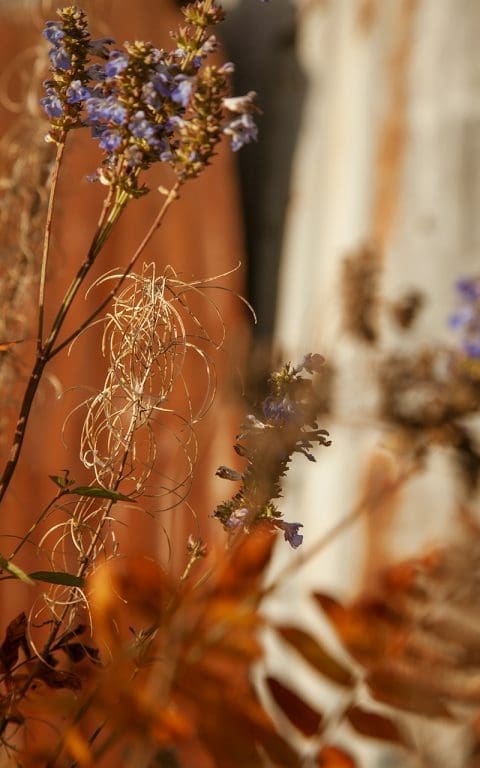
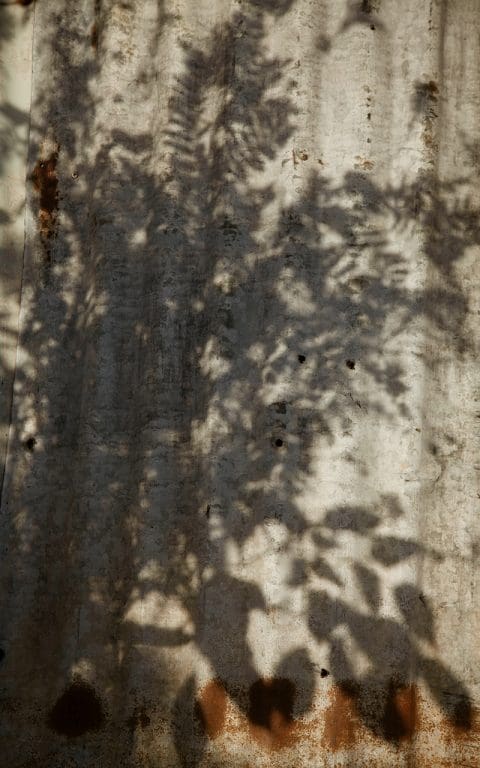
Anethum graveolens
Aster umbellatus
Astilbe rivularis
Atriplex hortensis
Cercidiphyllum japonicum
Chamaenerion angustifolium ‘Album’
Chasmanthium latifolium
Euonymus europaeus
Euphorbia cornigera
Ligustrum vulgare
Lythrum virgatum ‘Dropmore Purple’
Osmunda regalis
Prunus x yedoensis
Rosa eglanteria
Salvia ‘Blue Enigma’
Salvia ‘Blue Note’
Salvia uliginosa
Sambucus nigra
Scabiosa ochroleuca
Thalictrum ‘White Splendide’
Thalictrum ‘
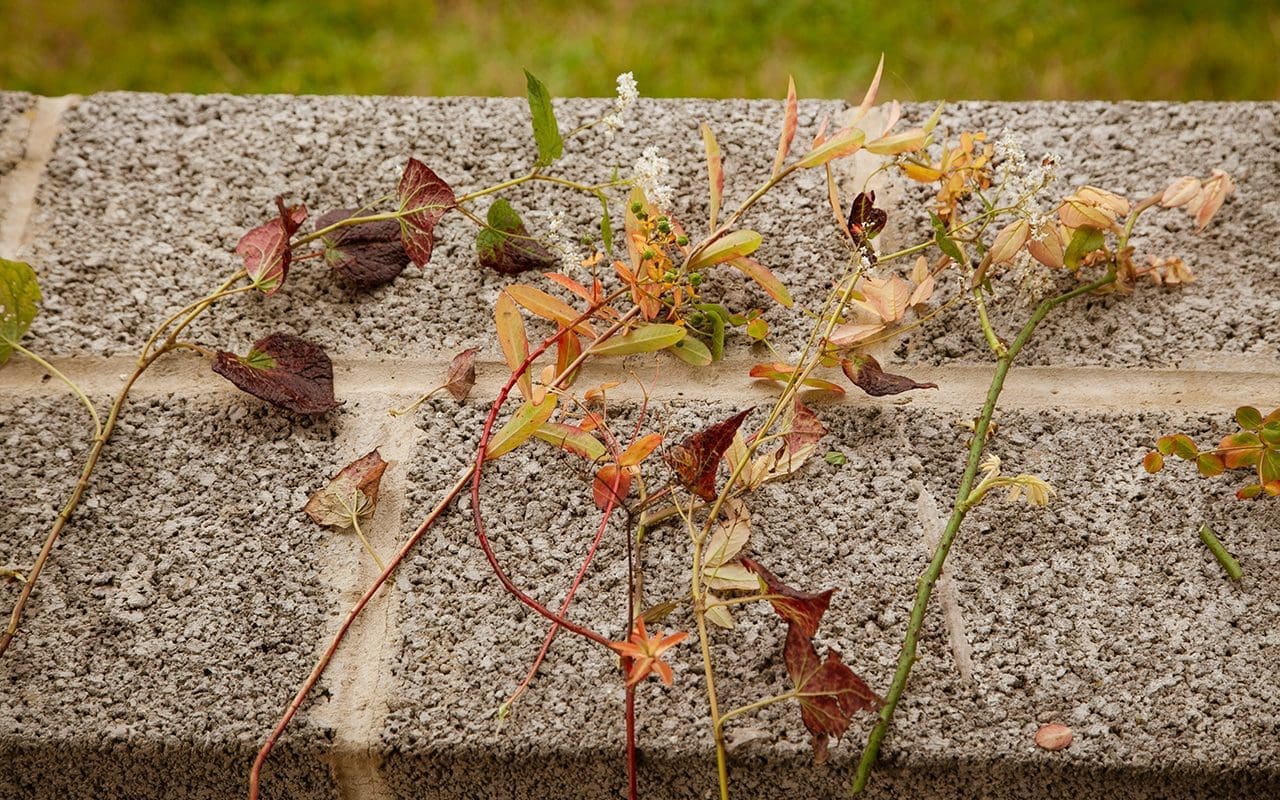
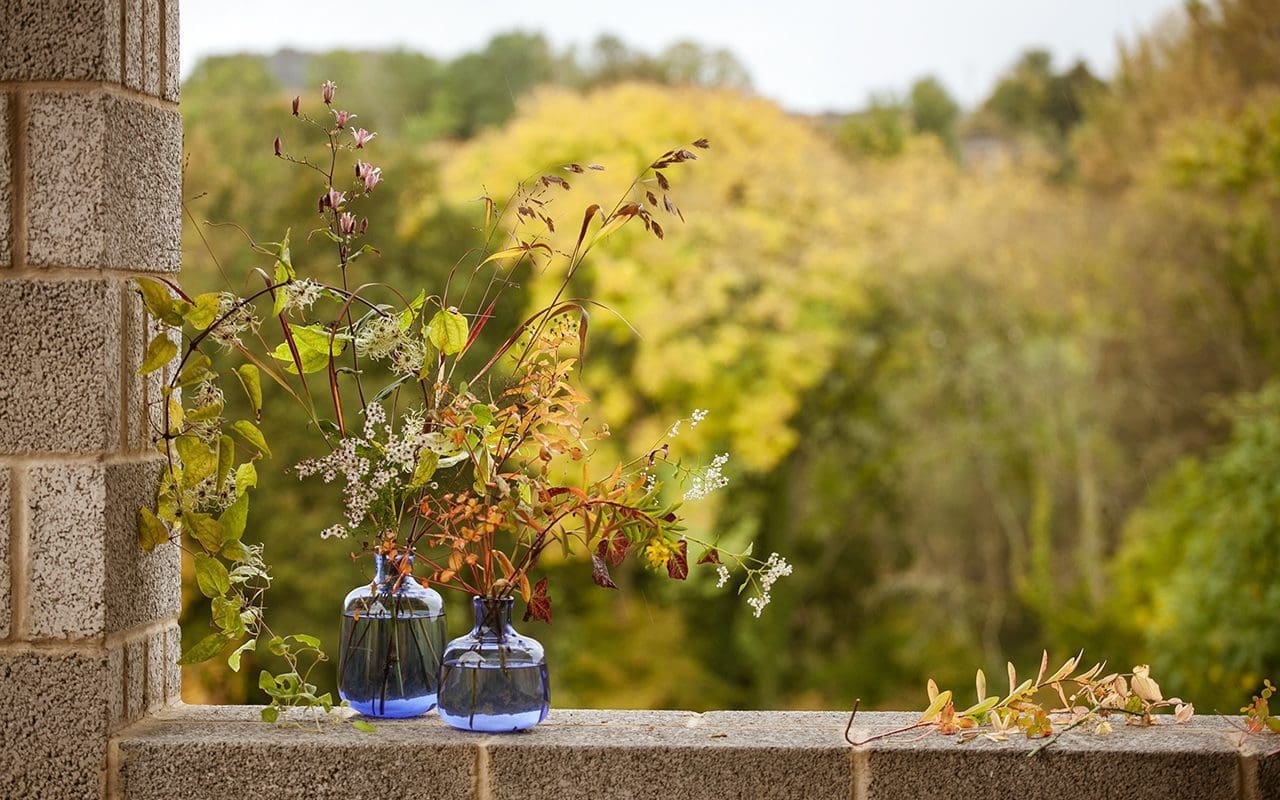
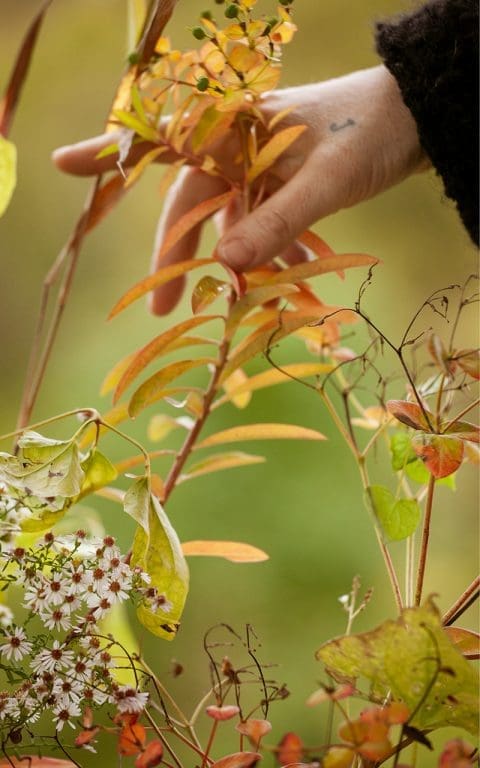
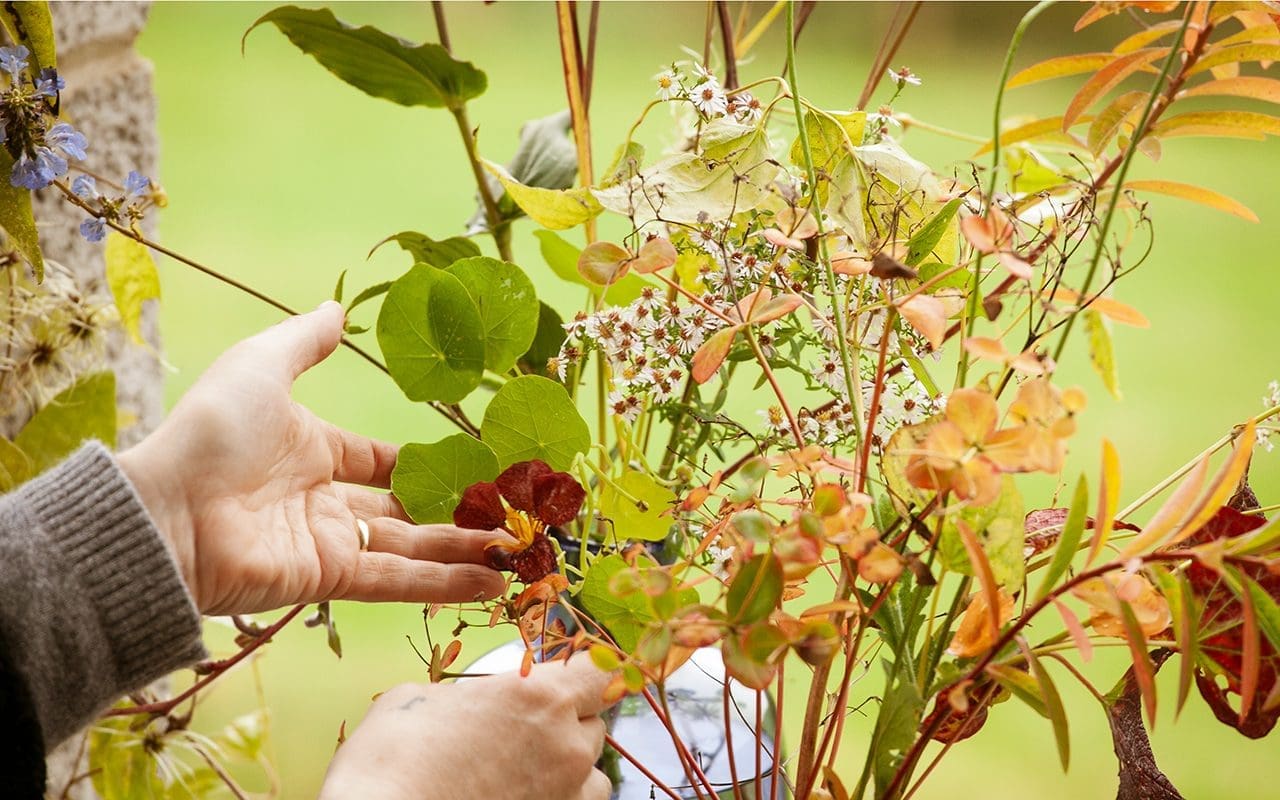
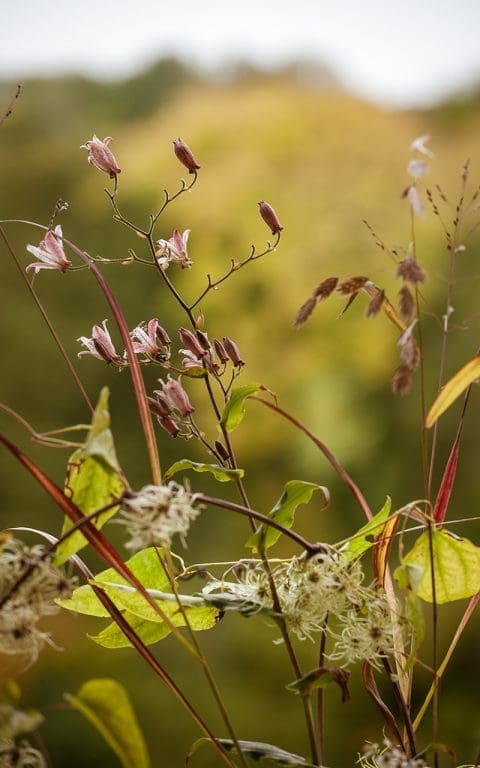
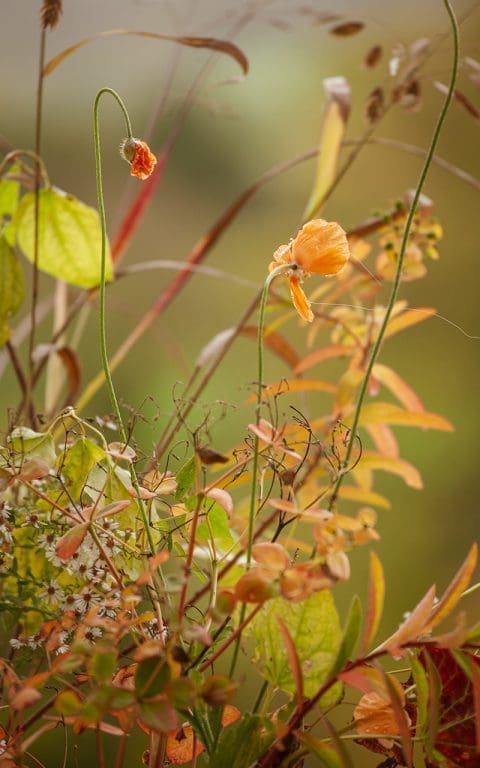
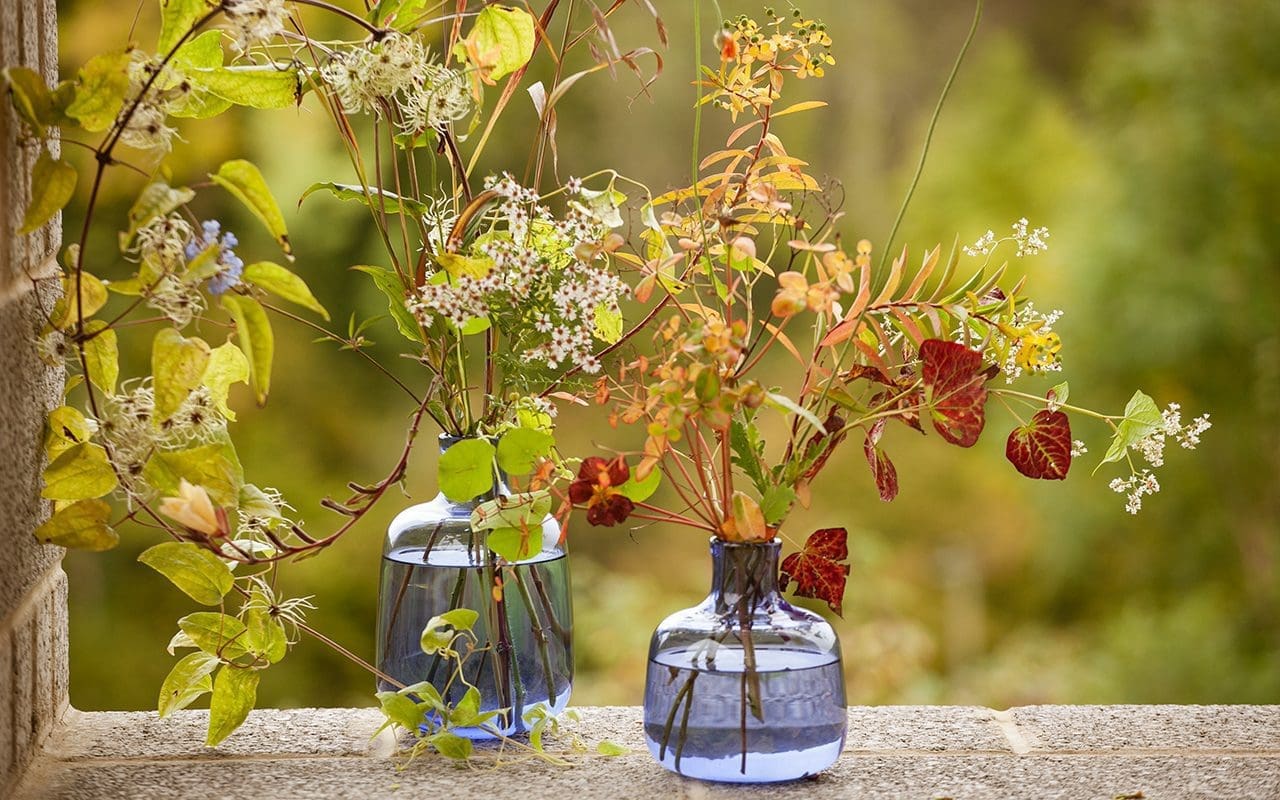
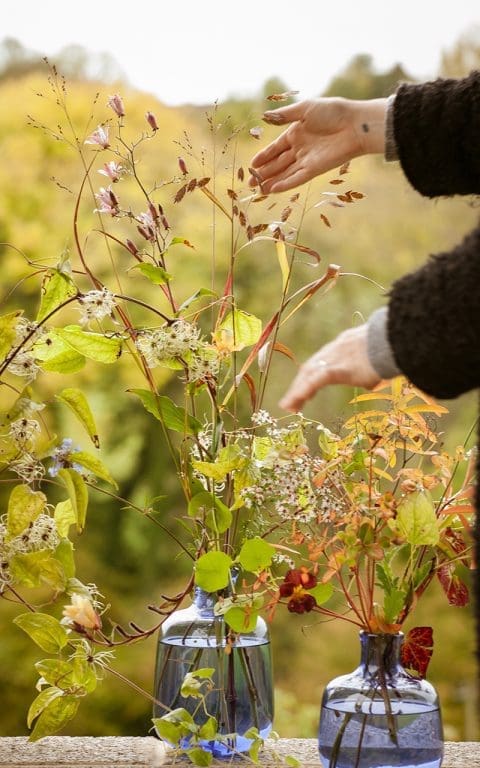
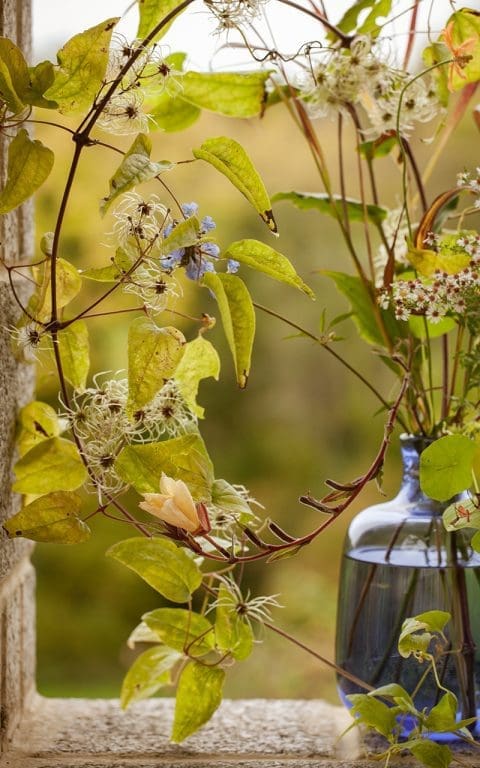
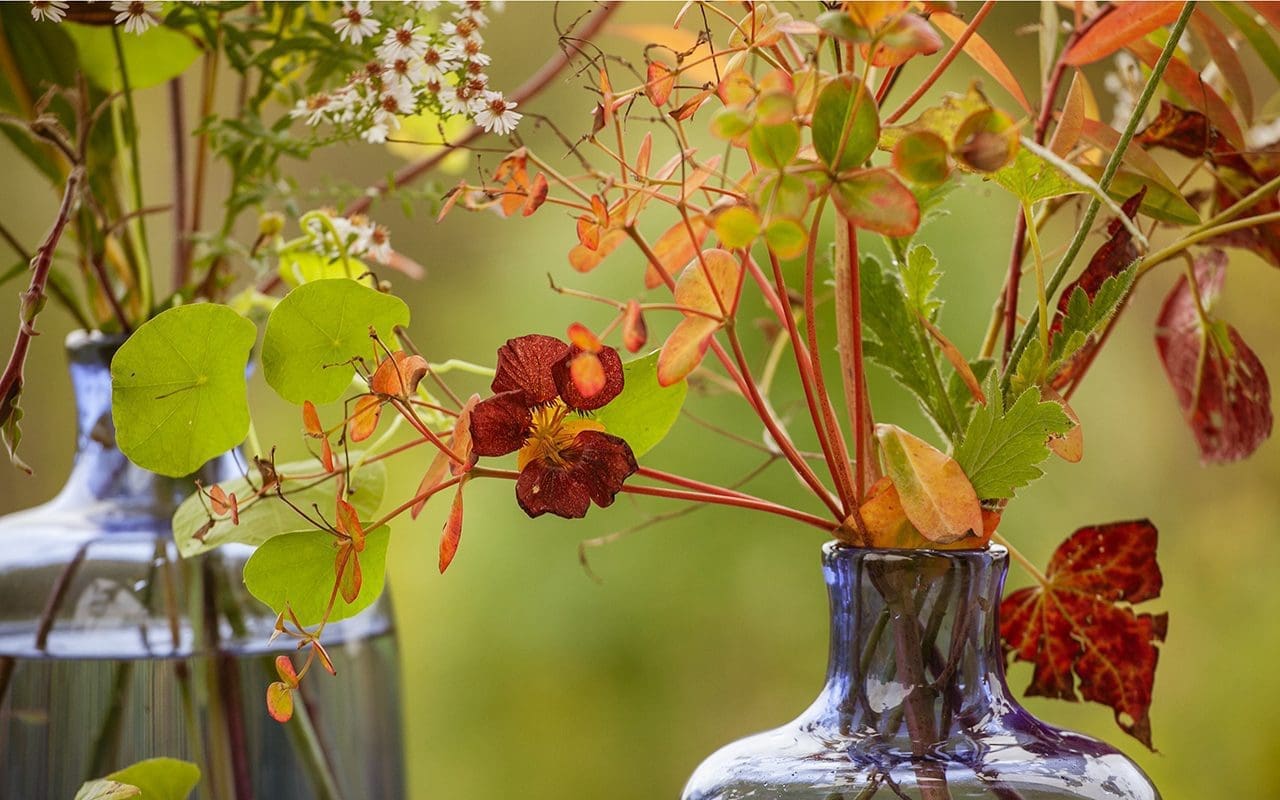
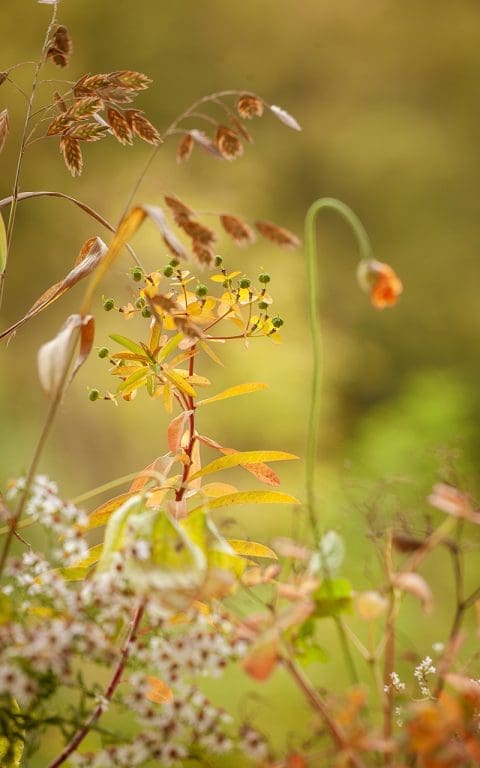
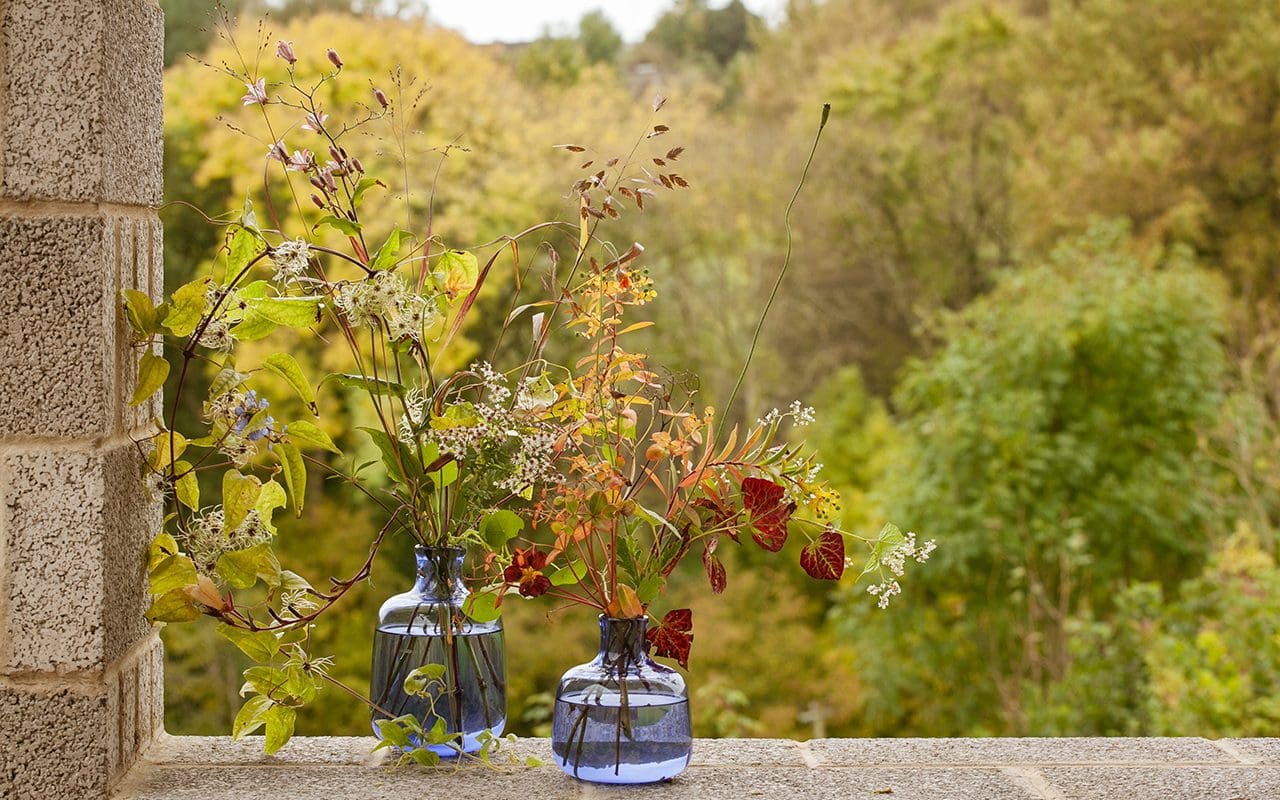
Aster unnamed white
Chasmanthium latifolium
Clematis vitalba
Euphorbia cornigera
Fagopyrum dibotrys
Oenothera stricta ‘Sulphurea’
Panicum virgatum ‘Heiliger Hain’
Papaver rupifragum
Rosa ‘The Lady of Shallot’
Salvia uliginosa
Tricyrtis formosana ‘Dark Beauty’
Tropaeolum majus ‘Mahogany’
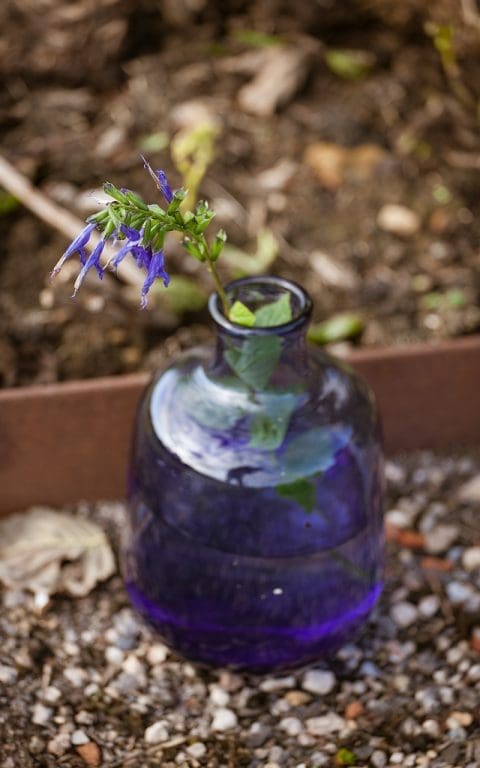
Photographs | Huw Morgan
Published 3 November 2019
Huw Morgan | 15 August 2019
Although I already knew of her by name, reputation and Instagram it was at the 2015 Port Eliot Festival, where we were both judges for the Flower Show, that I first met Flora Starkey. We hit it off instantly, finding that we gravitated towards the same entries in each of the show classes; those where the immediacy, spirit and freedom of the arrangement was more important than technical proficiency, complexity or sophistication.
These are some of the very qualities that set Flora’s work apart and she is rightly feted for her lightness of touch, very particular use of colour and sensitivity to decay and the use of the ephemeral in her arrangements, which have a melancholy beauty and Late Romantic sensibility. Amongst the new generation of floral artists hers is a completely distinctive vision.
I knew immediately that it would be exciting to give Flora the opportunity to come to Hillside and see what she made of our selection of plants and flowers. Although it has taken several years to come to fruition, finally last week Flora came.
After a walk around the garden taking everything in (and impressing me with her plant knowledge) Flora identified the things she most wanted to use. It was wonderful to see her working with such intent focus and speed. The instinctive way in which she both selected plants from the garden and then placed them together in the arrangements was both very down to earth and practical, but also full of the mystery of intuitive artistic expression.
Over a glass of wine after an adrenalin charged afternoon, I asked Flora if she would like to come back to see the garden in another season. ‘Of course !’, she said. And so, schedules allowing, we are planning for Flora to return to make further floral portraits of the garden here in autumn, winter and spring.
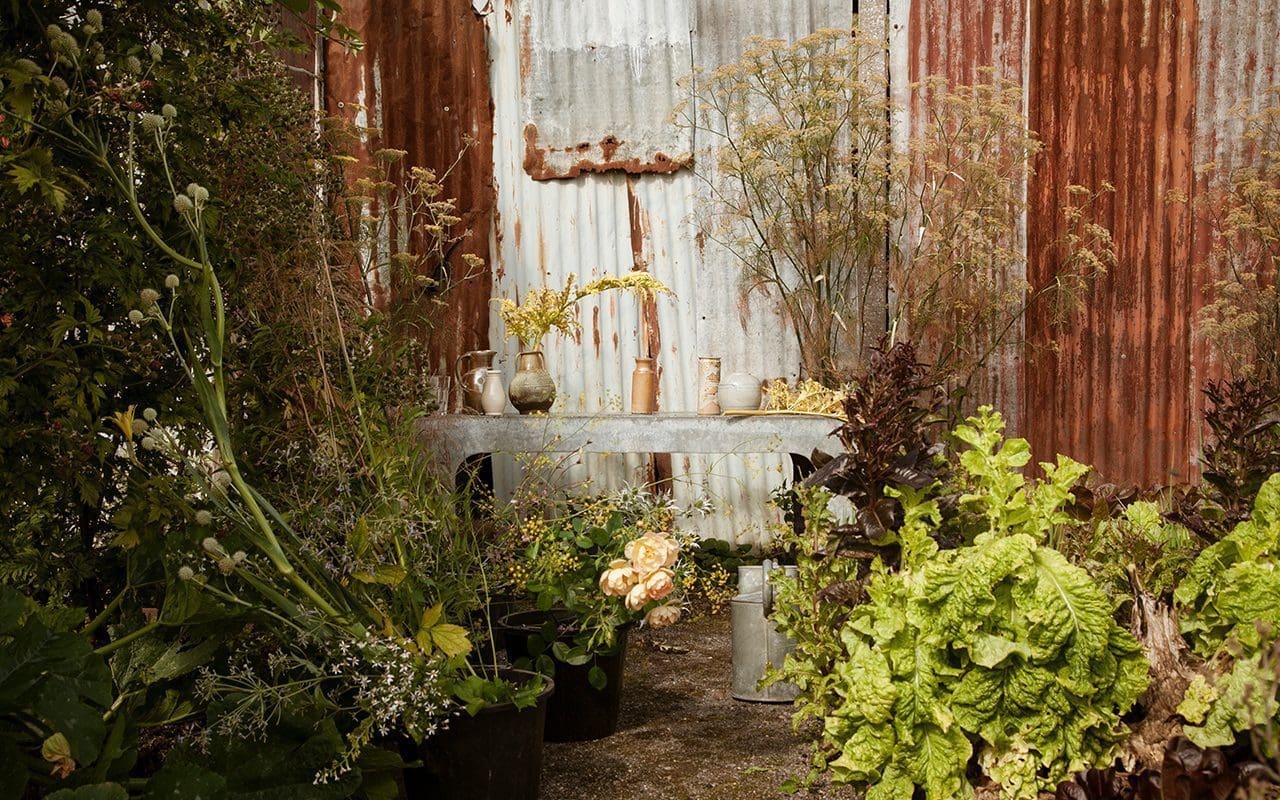
Flora Starkey | 8 August 2019
On arriving at Hillside, it is immediately apparent how the land holds the house & outbuildings central amongst the different areas of garden, the fields and valley beyond. Sitting outside, while Huw made a pot of tea, I had a strong sense of the patchwork of history of the place and the different stories that have been woven there over time. There is magic in somewhere so loved.
We chose the location for the shots outside one of the original barns surrounded by the kitchen garden – a place of old & new. For me, the space is always the starting point of any arrangement and the corrugated metal backdrop with its patches of rust led to Huw’s collection of stoneware vases.
Then to the garden. I wanted to create an arrangement from this setting while impacting on it as little as possible, so we cut sparingly – one or two stems from each plant – some of which had already been blown over in the wind. I chose what I felt captured the feel of this time of year, high summer with autumnal undertones. I’m always drawn to the changing colour of the leaves as they move through the seasons, the most beautiful stems in my opinion are the ones in transition or decline.
I felt there were two stories in the flowers at Hillside in early August: firstly the creams and buttery yellows with the odd splash of blue & lavender, and then the drama and heat of the reds, dark purples and browns. So we decided on two arrangements. I wanted to show the flowers for what they are: wild and changing, not too ‘arranged’, and of their place. Using a collection of mixed sized vases to make one piece is a way that I often like to work as it allows for a fairly large arrangement whilst giving more space in between the stems.
The molopospermum led the first with its sculptural leaves of bright yellow turning rust brown, and then a tall stem of Achillea chrysocoma ‘Grandiflora’, dried and curled at the top. Further down the stem, the leaves became a rainbow mix of pale green fused with yellow and wine red.
Evening primrose, fennel, actaea and Bupleurum longifolium ‘Bronze Beauty’ followed to give height and structure and all in different stages between flower & seed. This is where I find the true beauty, in the changes through which every plant evolves. Then a single stem of Rose ‘The Lark Ascending’, to add a touch of glamour, quickly offset with some bone coloured poppy heads. A hemerocallis lily was softened by some chasmanthium and two varieties of Calamintha in cream and lavender to visually draw the stems together. Finally some echinops and a sprig of Eryngium giganteum snipped from under the table to finish.
The second arrangement featured pops of bright red in the dahlias, crocosmia and geranium against a tangled backdrop of daucus, verbena, sanguisorba, persicaria and asters with a single arching stem of dierama in seed swinging above. Again, it was the mottled & turning leaves of the Nepeta ‘Blue Dragon’ with its dried flower heads that brought the most joy.
This really must be the most satisfying kind of creativity: working with flowers in your direct locality & the opportunity to use so-called imperfect stems, the beauty in which is so often strangely overlooked.
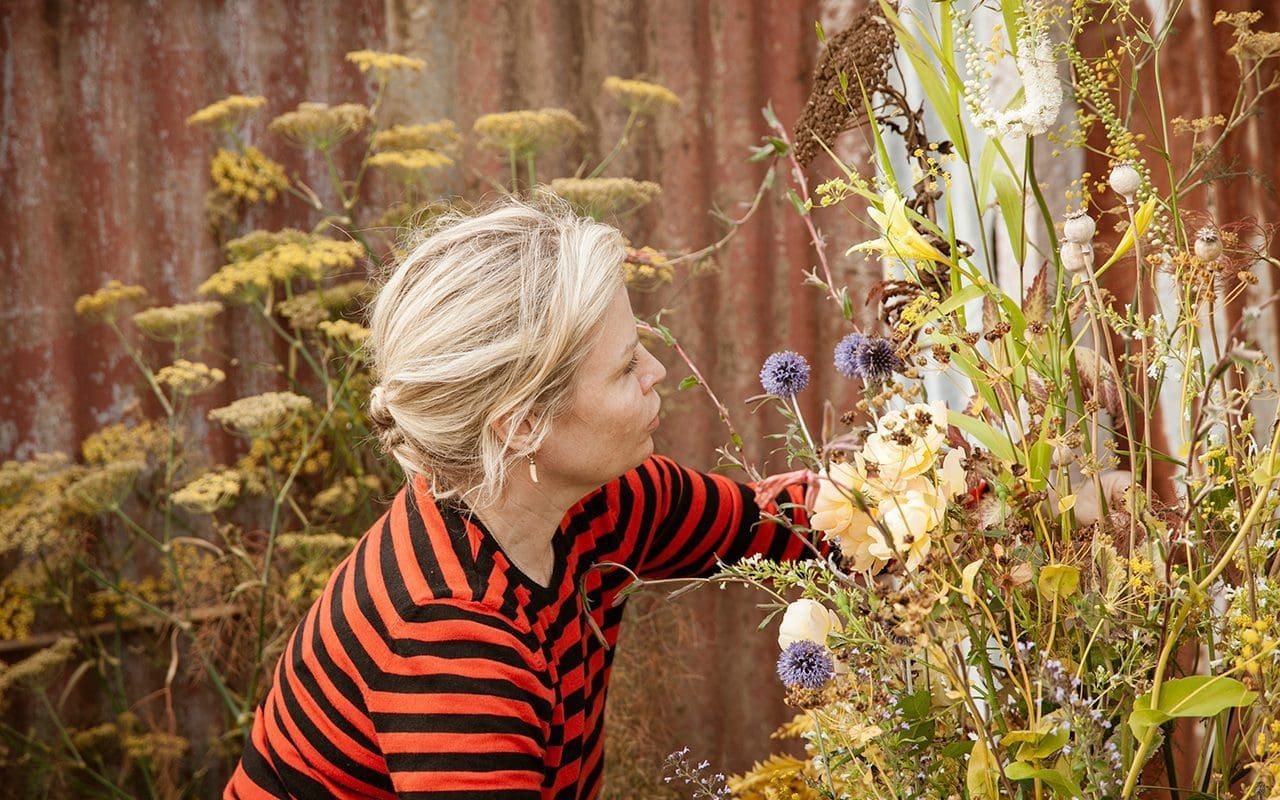
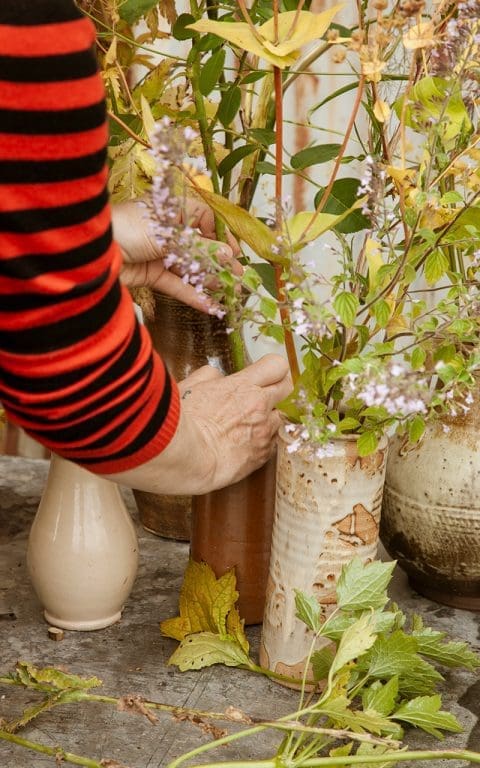
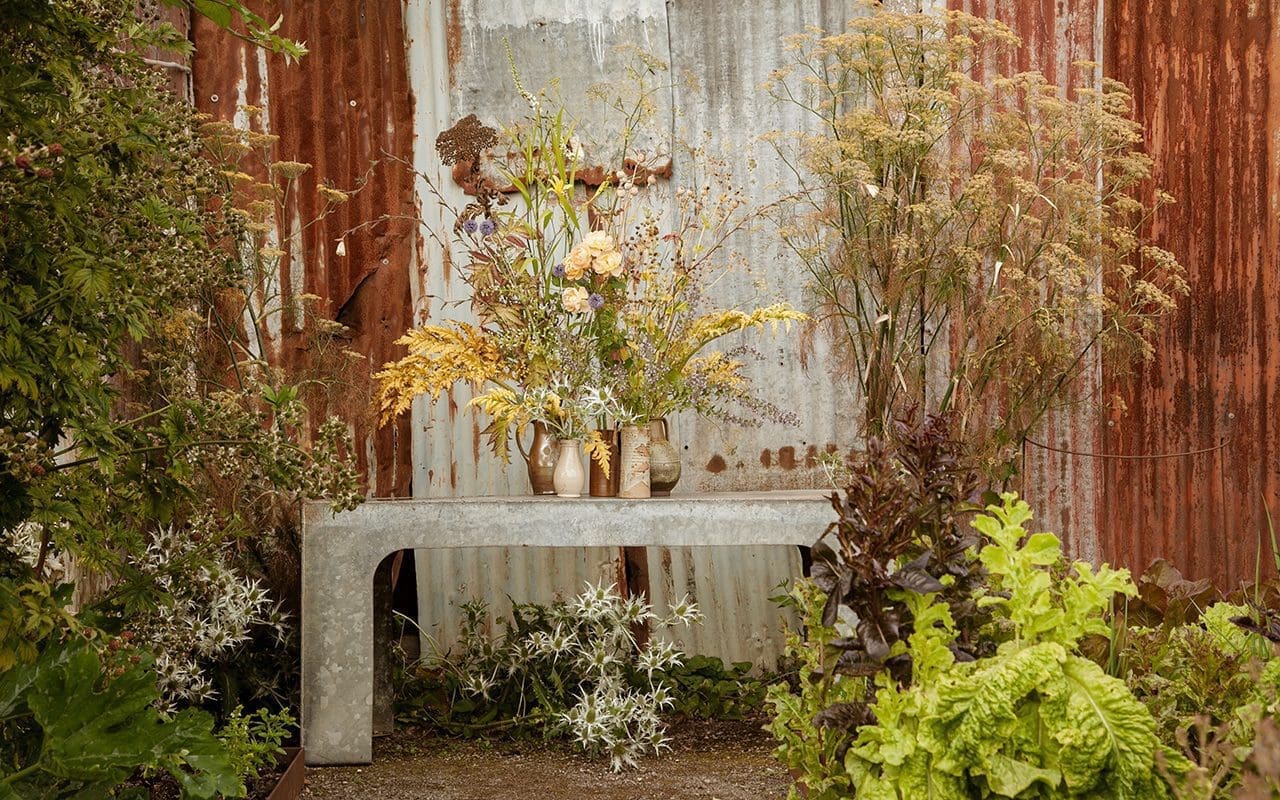
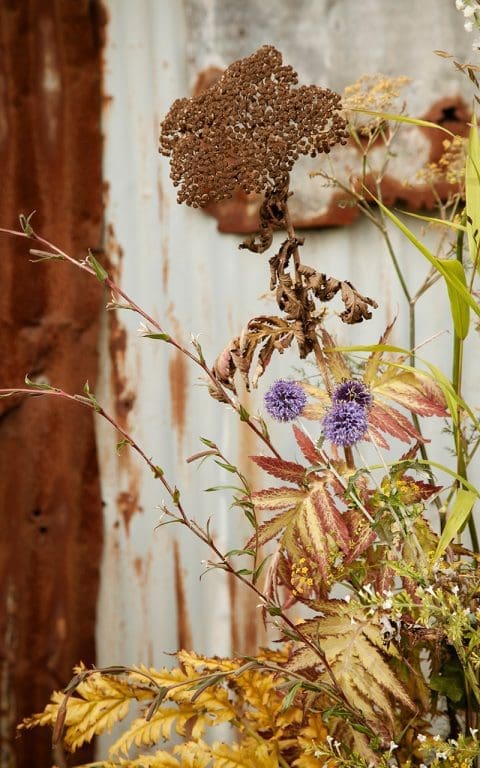
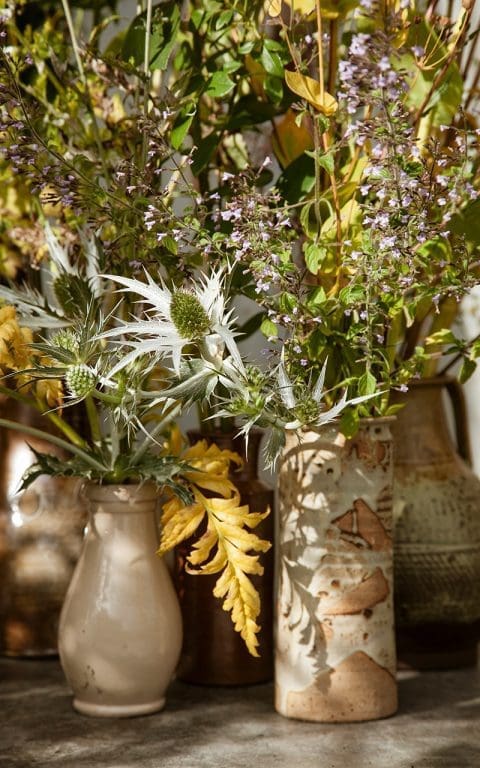
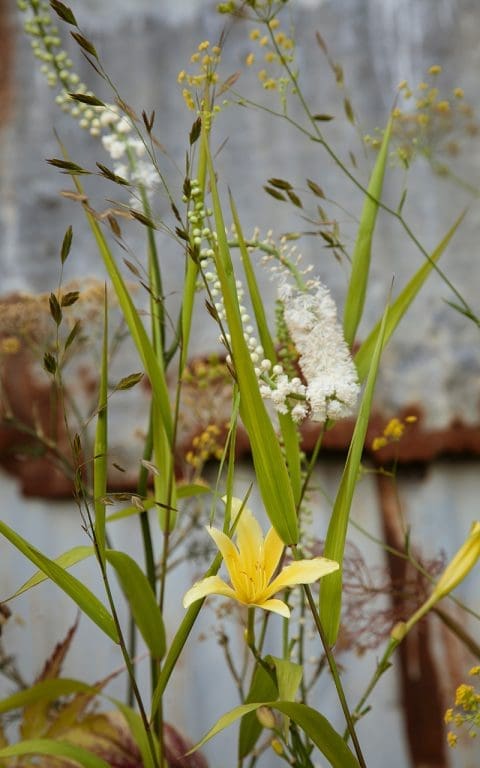
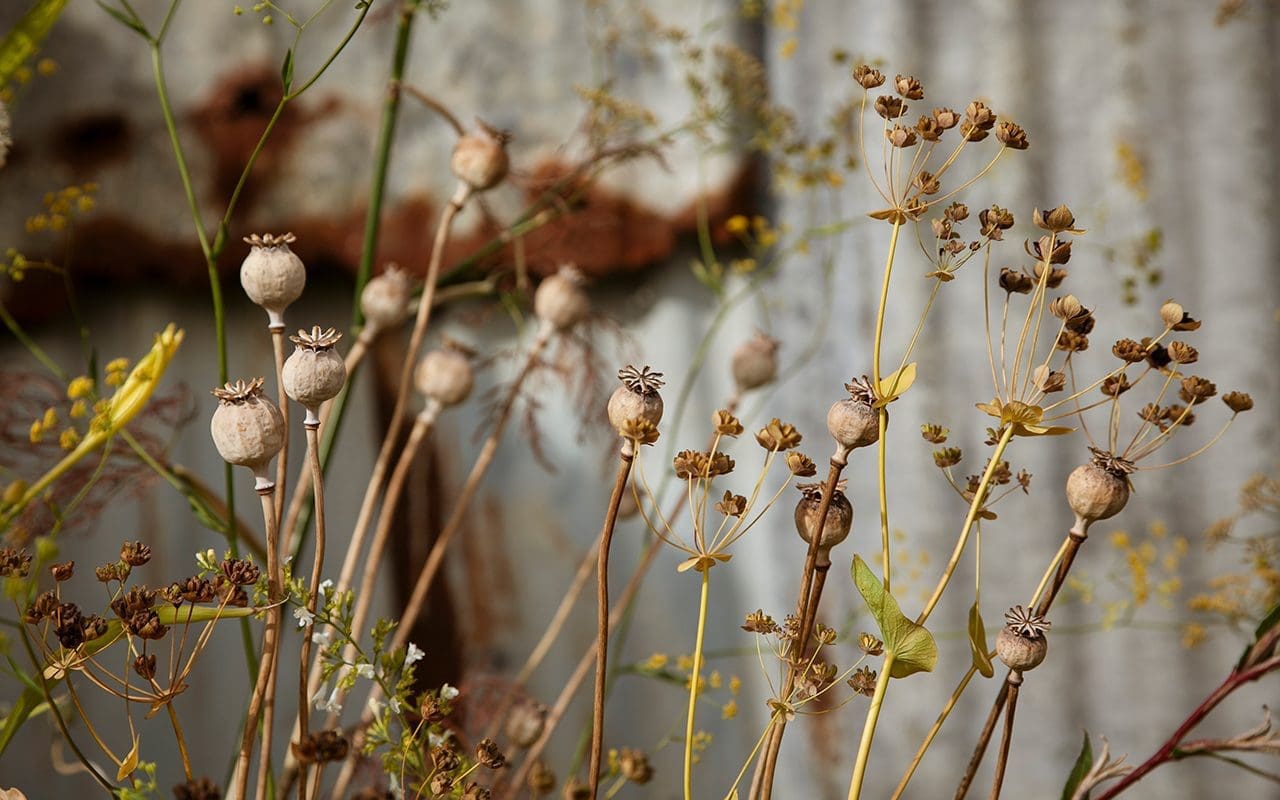
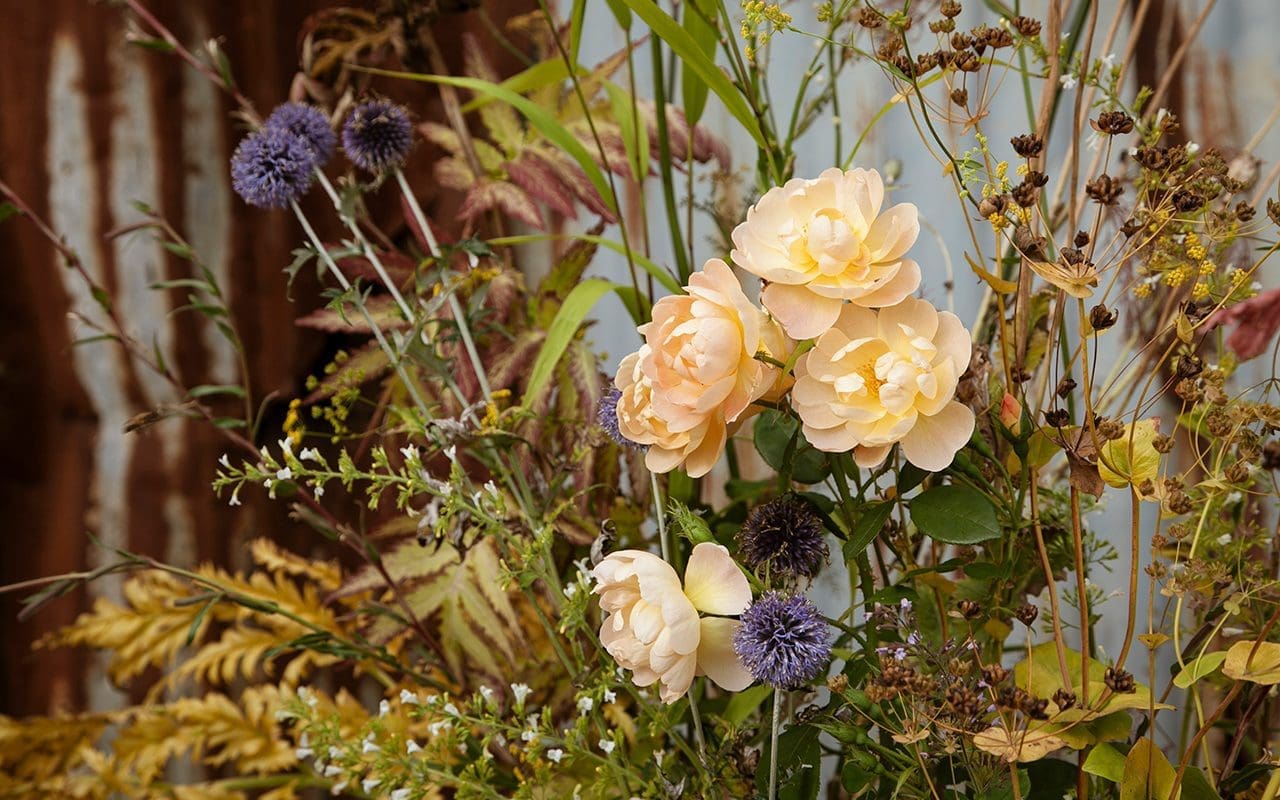
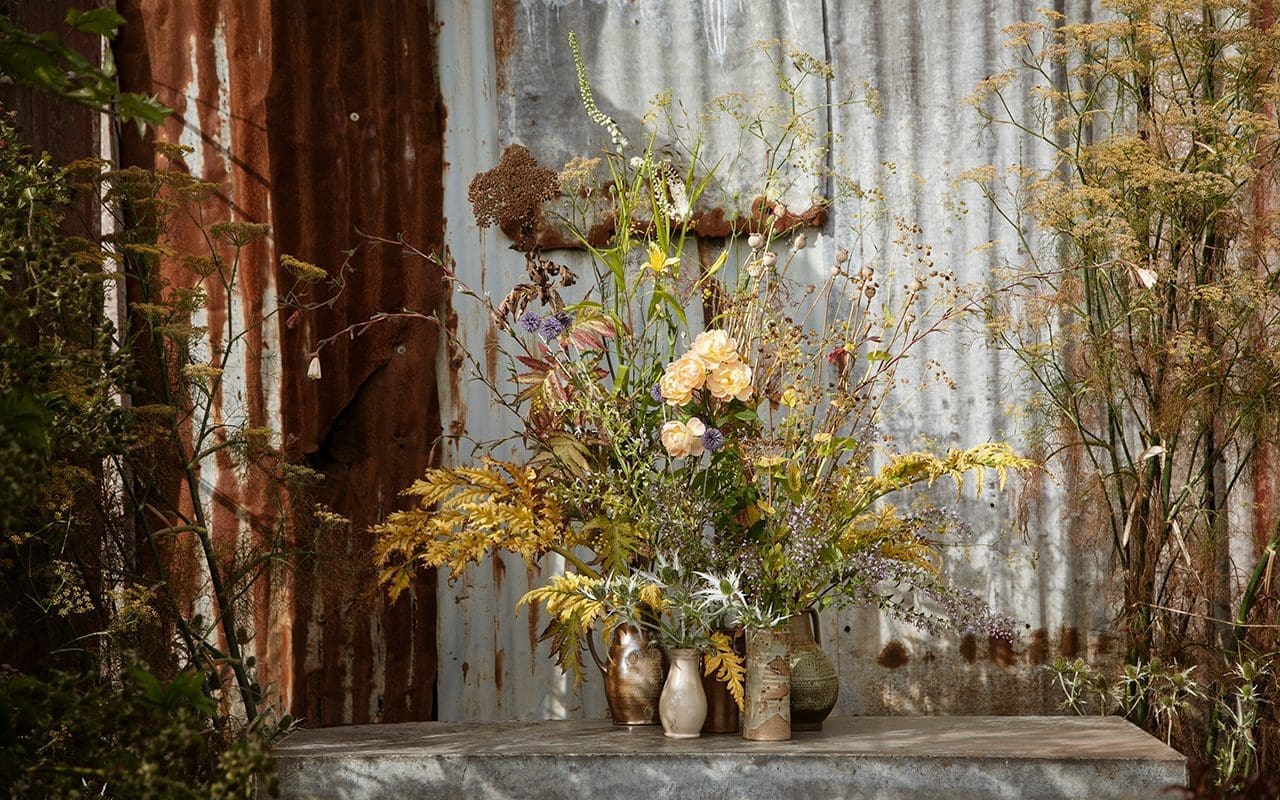
Achillea chrysocoma ‘Grandiflora’
Actaea racemosa
Bupleurum falcatum
Bupleurum longifolium ‘Bronze Beauty’
Calamintha nepeta ssp. nepeta ‘Blue Cloud’
Calamintha sylvatica ‘Menthe’
Chasmanthium latifolium
Echinops bannaticus ‘Veitch’s Blue’
Eryngium giganteum
Foeniculum vulgare ‘Purpureum’
Hemerocallis citrina x ochroleuca
Molopospermum peloponnesiacum
Oenothera stricta ‘Sulphurea’
Papaver somniferum ‘Single Black’
Rosa ‘The Lark Ascending’
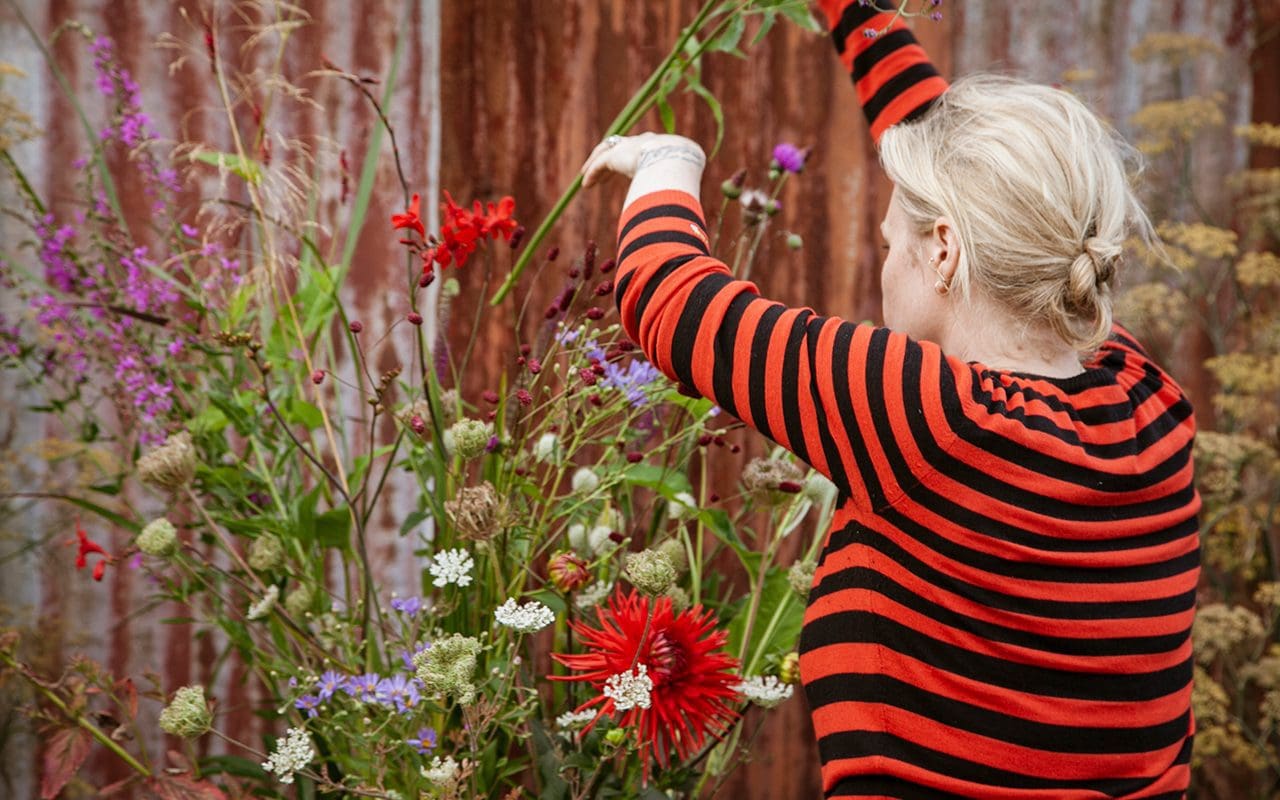
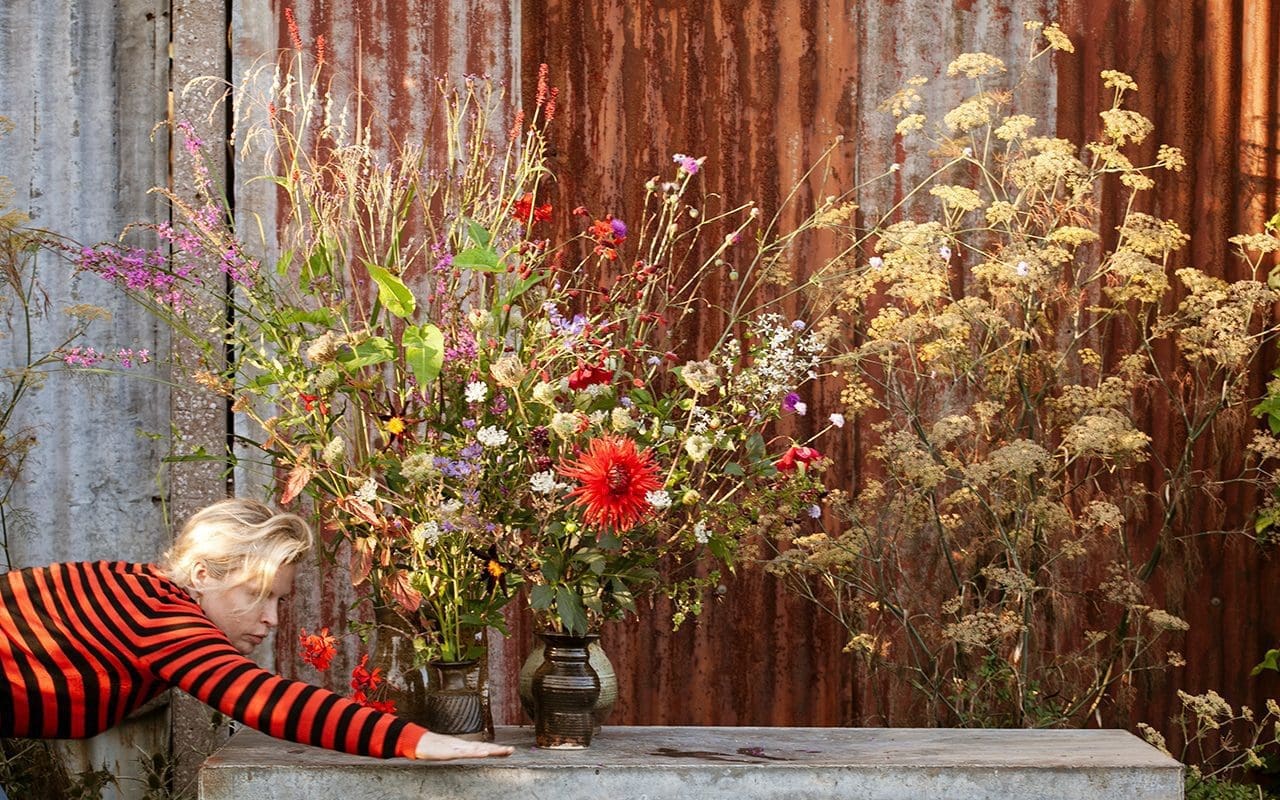
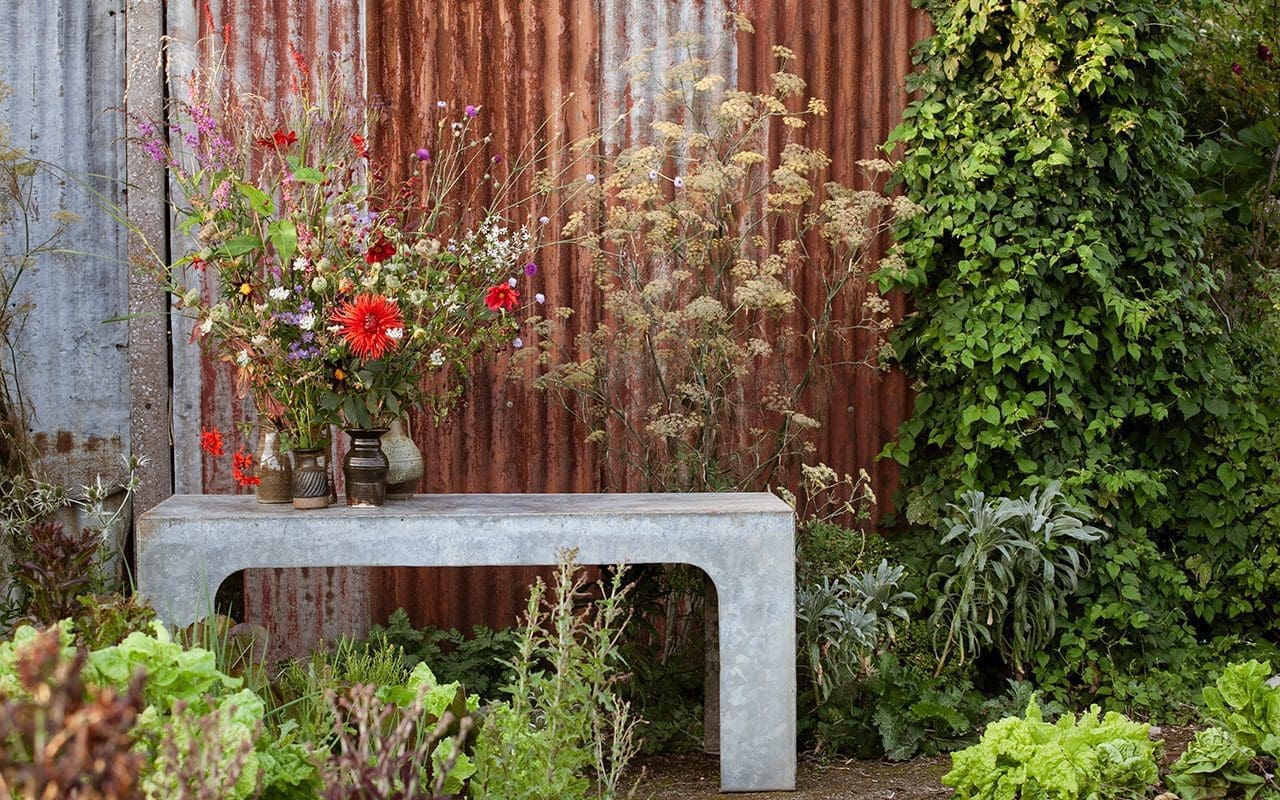
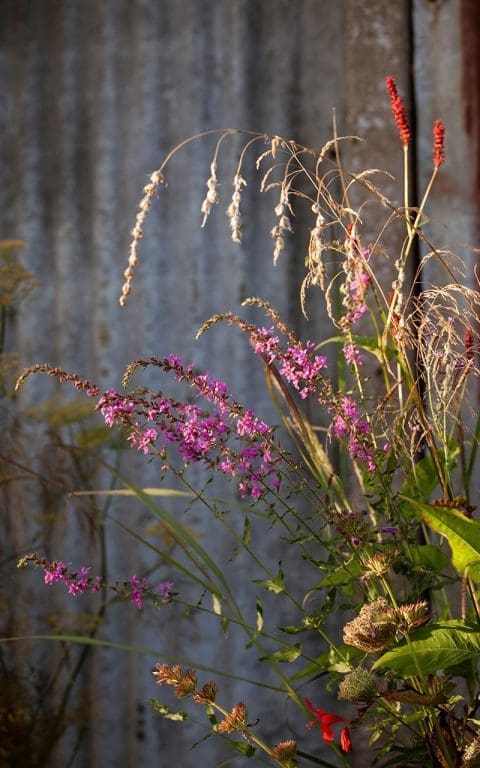
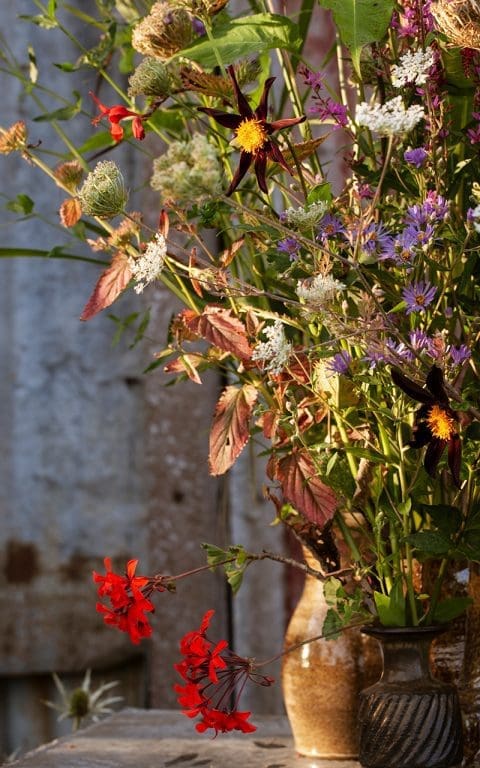
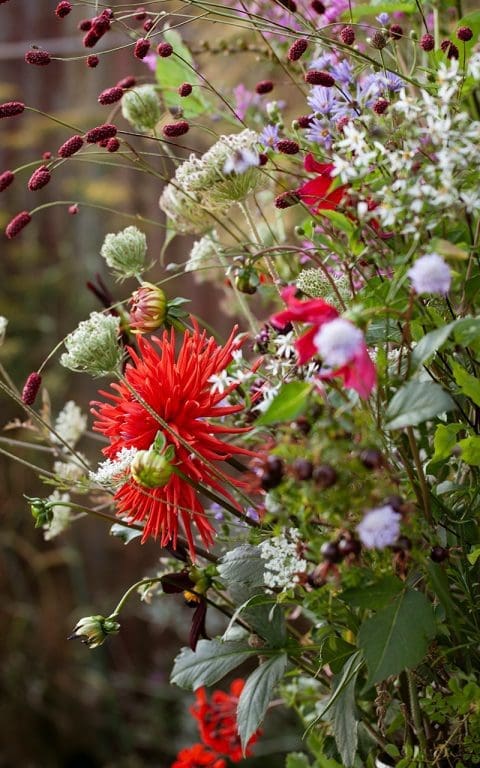
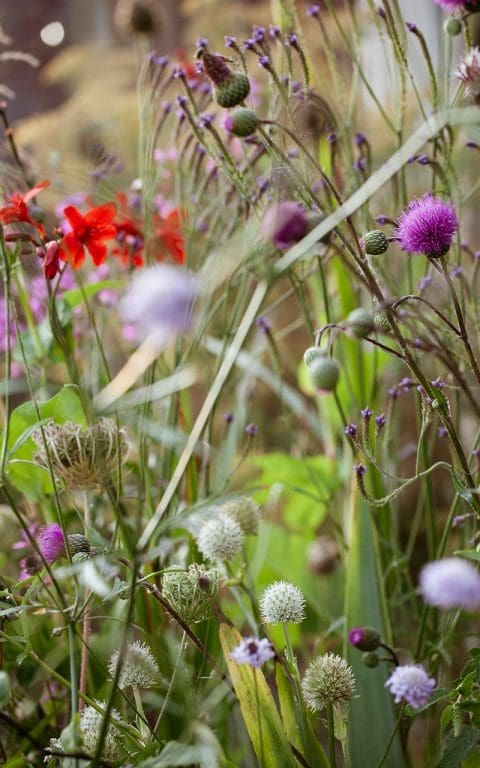
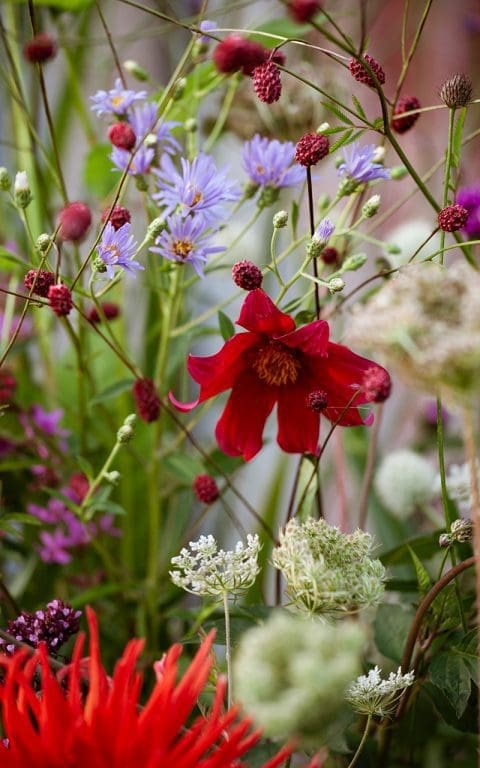
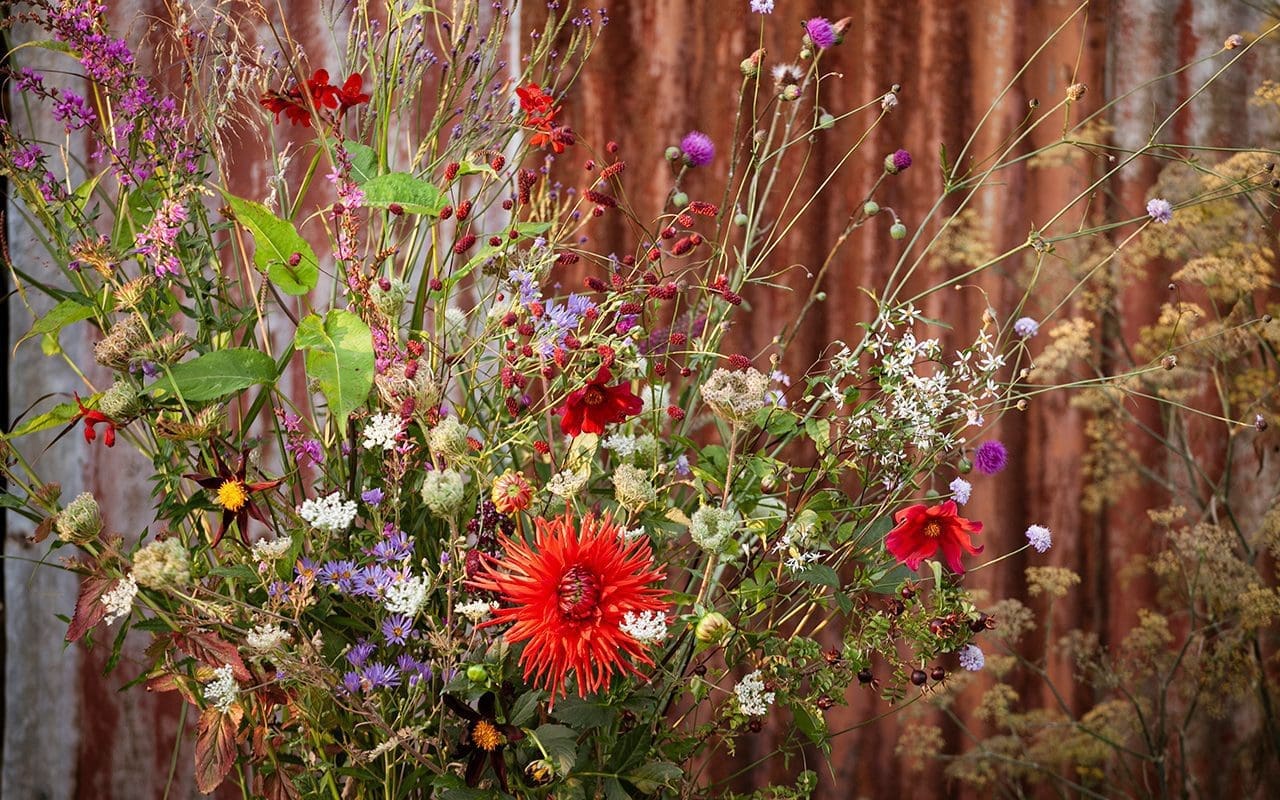
Cephalaria transylvanica
Cirsium canum
Crocosmia ‘Hellfire’
Dahlia ‘Verrone’s Obsidian’
Dahlia coccinea ‘Dixter Strain’
Dahlia species (‘Talfourd Red’)
Daucus carota
Deschampsia cespitosa ‘Schottland’
Dierama pulcherrimum ‘Blackbird’
Eurybia divaricata ‘Beth’
Eurybia x herveyi
Lythrum virgatum ‘Dropmore Purple’
Nepeta ‘Blue Dragon’
Origanum laevigatum ‘Herrenhausen’
Pelargonium ‘Stadt Bern’
Persicaria amplexicaulis ‘Blackfield’
Rosa spinosissima
Sanguisorba officinalis ‘Red Thunder’
Verbena macdougalii ‘Lavender Spires’
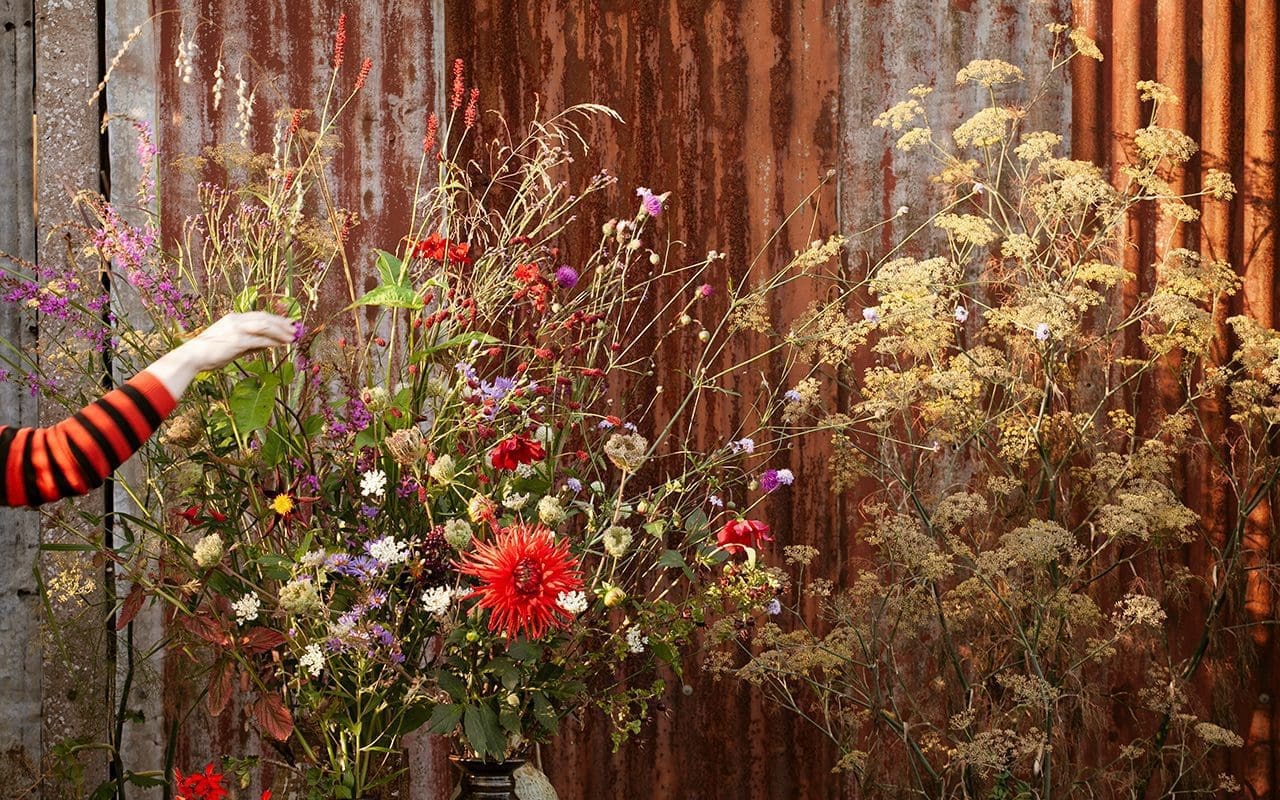
Photographs | Huw Morgan
Published 17 August 2019
We are sorry but the page you are looking for does not exist. You could return to the homepage